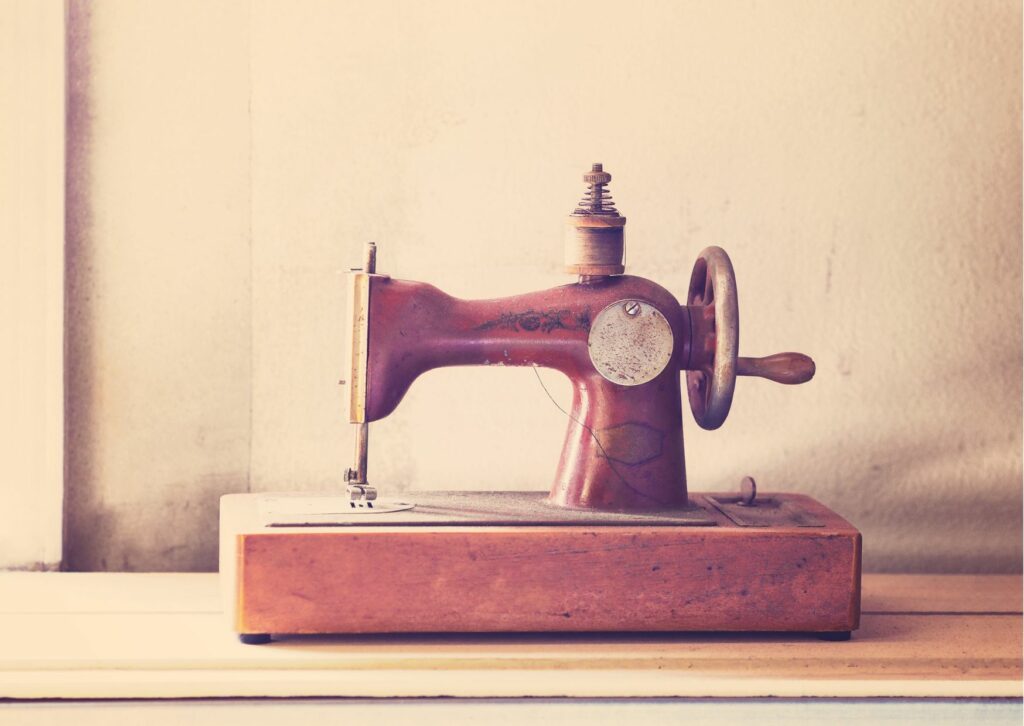
Have you ever wondered who invented the first sewing machine? Well, it’s a story of innovation, hard competition and lost patents. The sewing machine has had a profound impact on the clothing and textile industries and has revolutionized the way we produce and create garments, providing us with the ability to quickly and efficiently produce clothing and household textiles on a large scale. Let’s tell you the short story!
One of the earliest recorded attempts to create a sewing machine was made by Charles Frederick Wiesenthal, a German engineer, who created a mechanical device to automate needlework in 1755. He received the first British patent in this field for inventing a double pointed needle with an eye at the end. But this wasn’t a sewing machine yet.
Later in 1790, Thomas Saint, an English inventor, was credited with inventing the first sewing machine. The machine could sew leather and canvas and used a single thread and a hooked needle that was designed to pass through the fabric in a continuous loop, creating a lockstitch. He also created a wooden frame to hold the fabric in place while it was being sewn. However, Saint’s machine was never put into commercial production during his lifetime but his invention influenced greatly the development of sewing machines. His original patent and drawings were later rediscovered in the mid-20th century by William Newton Wilson who created a replica (which was donated to the London Science Museum).
Want to buy quality fabrics? Head now to our e-shop La Cotonnerie to shop organic, ethnic or designer fabrics.
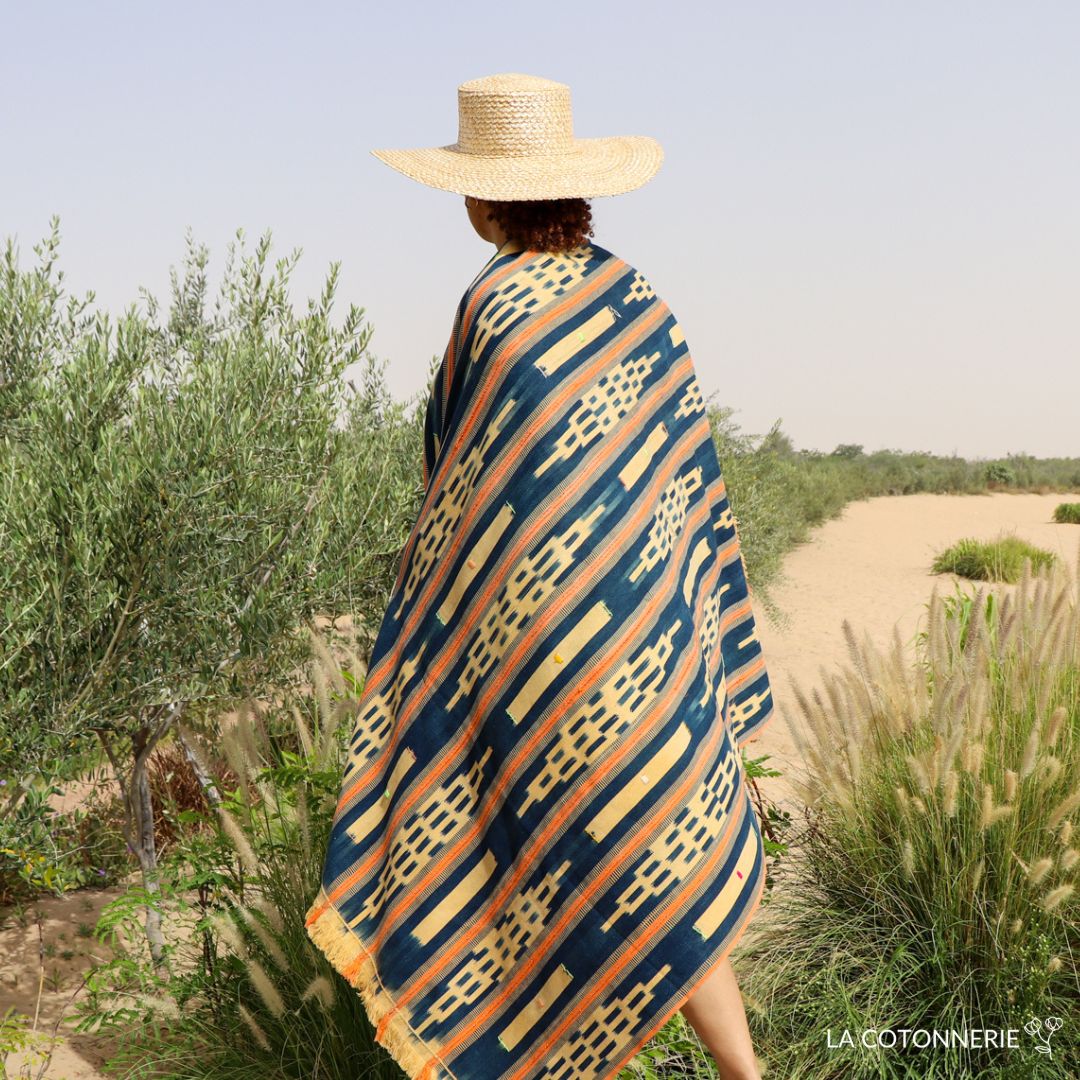
It wasn’t until the 19th century that a more practical and successful sewing machine was invented. Barthélemy Thimonnier, a French inventor, created a machine which would sew straight seams using Saint’s technic. He patented his machine in 1830 and opened the same year the first clothing factory in the world which was machine-based to produce army uniforms for the French Army. However, the factory was set on fire by other tailors who were afraid of losing their jobs after the patent was issued.
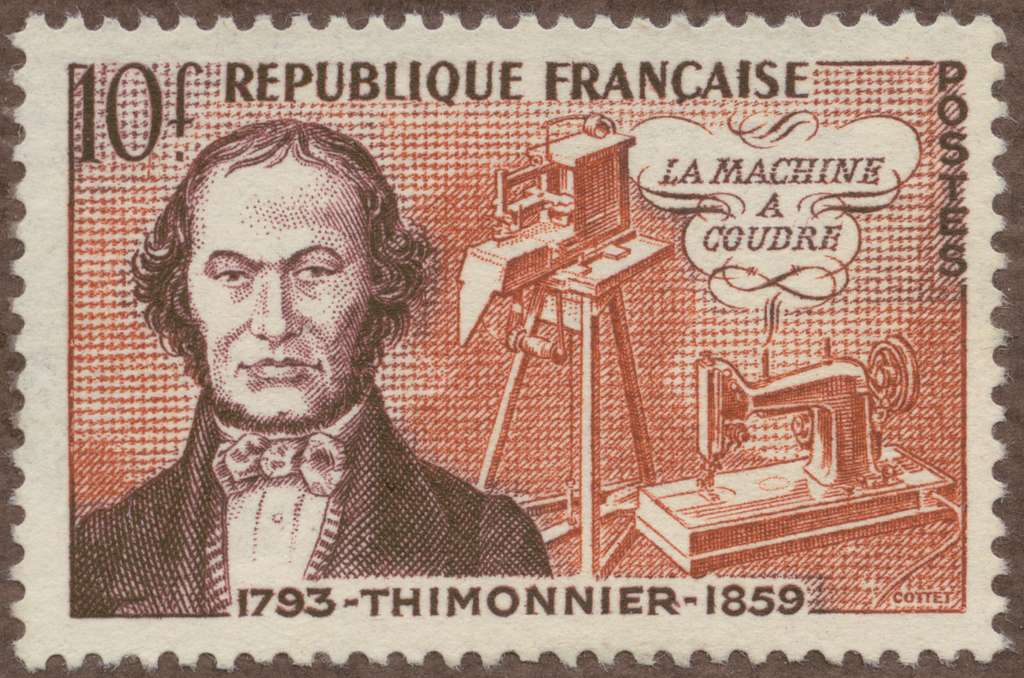
On the other side of the Atlantic, Americans also tried to create their own sewing machine. Walter Hunt created in 1832 the first lockstitch sewing machine. Nonetheless, the machine was not reliable and had to be stopped regularly to reset it. He finally lost interest in the machine and didn’t even bother to patent it straight away.
In 1844, English inventor John Fisher built a sewing machine that combined all the different elements of the previous 50 years of innovation into what is now recognized as the modern sewing machine. However, the patents for his machine were lost by the Patent office and he never received the recognition for it.
At the same time, Elias Howe, another American inventor, created a similar device to Fisher’s and a bit later in 1851, Isaac Singer, an American inventor too, patented a similar sewing machine. It used a foot pedal to control the speed of the needle. This design made sewing much faster and easier. Singer sewing machines quickly became popular and led to the establishment of the Singer Sewing Company. However, since Singer got inspiration from Howe, the latter filed a lawsuit and won, awarding him the right to claim royalties from Singer’s factory when his ideas were used.
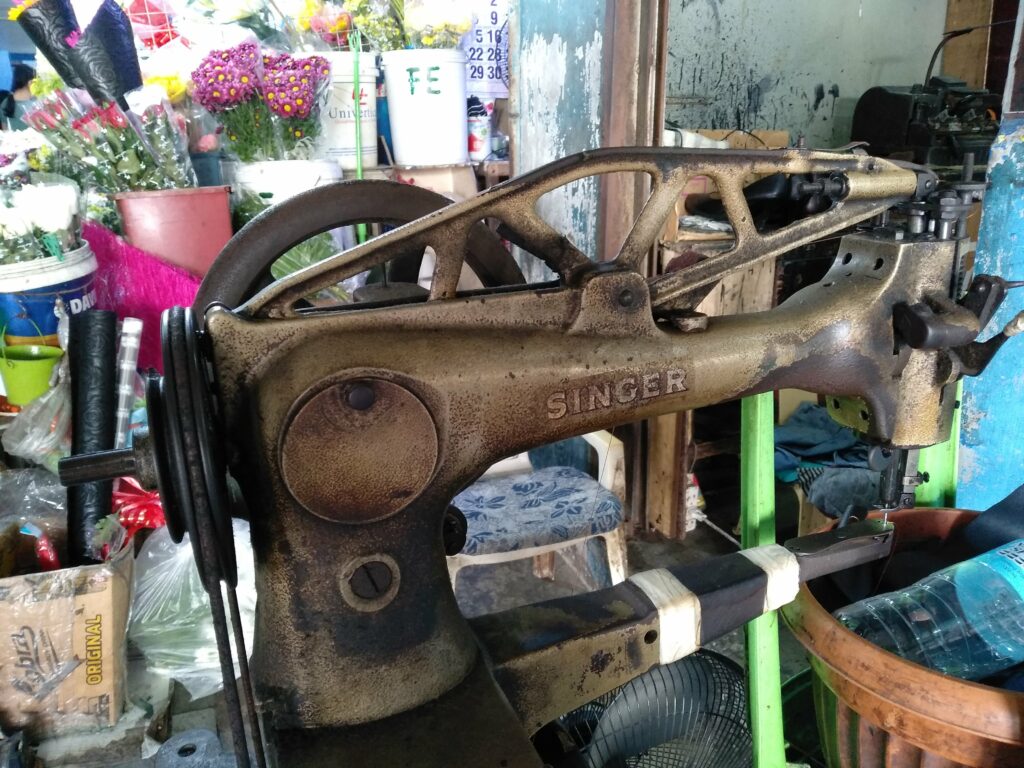
The widespread use of sewing machines brought about many other innovations in the clothing and textile industries, such as the introduction of mass-produced clothing and the ability to quickly produce large quantities of clothing. As the technology improved and production increased, the price of sewing machines decreased, making them more affordable and accessible to the general population.
The advent of the home sewing machine in the late 19th and early 20th centuries also had a significant impact on society, as it allowed individuals to create their own clothing and household textiles, rather than being solely dependent on purchasing pre-made items. The home sewing machine also allowed for greater creativity, as people could experiment with different fabrics and designs, leading to the development of new styles and fashion trends.
As we move into the 21st century, the sewing machine continues to evolve, with new models featuring advanced technologies, such as computerized controls and built-in embroidery capabilities. Today, sewing machines are used for a wide range of purposes, from basic repairs to intricate decorative stitching, and have become a staple in many households.
In today’s blog post, we have the pleasure of introducing Deborah, alias @debbie___8 on Instagram, a talented seamstress who has kindly agreed to share her passion for sewing with us. Her attention to detail and skillful approach make her sewing projects not only beautiful but also unique. So sit back, relax, and join us as we delve into Deborah’s sewing journey!
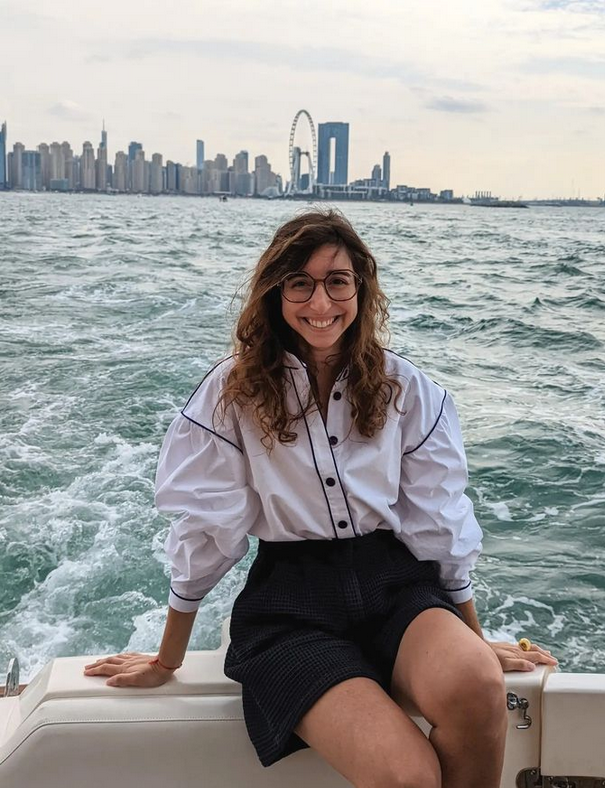
Can you shortly introduce yourself?
My name is Deborah, I am 29. I moved to Dubai 6 months ago for a professional opportunity. I am a retail merchandiser for a French luxury brand. During my evenings and weekends, I sew and knit, I also love discovering this new city.
How long have you been sewing, and how did you first get interested in it?
I have been sewing for 3 years now. I actually bought a sewing machine about 10 years ago, but with a lack of time and motivation I didn’t really sew anything. After my degree, I saw the creations of a former classmate of mine, and it definitely motivated me.
Looking for quality fabrics for your sewing projects? Visit our store La Cotonnerie
What benefits do you get from sewing?
It helps me practice my creativity and my patience. I discovered how proud I can be when I wear something I have created. And obviously from sewing, I get a new and unique wardrobe.
What types of projects do you enjoy sewing the most?
I really love to create runway-inspired looks. It takes more time but it’s so much more fun.
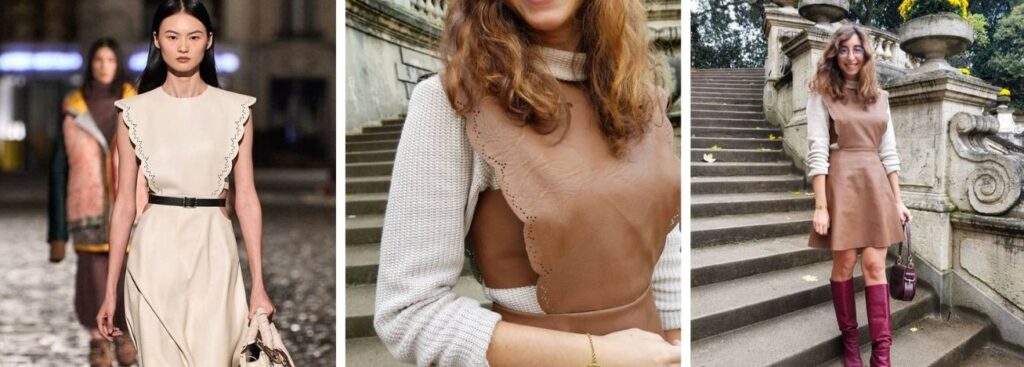
Where do you find your creativity?
Mainly runways, fashion trends, street.
You have done a sewing degree despite already knowing the sewing technique. What were your main takeaways from this course?
It was a personal challenge, and I knew there was no commitment involved. It could be useful to have this degree, we never know 😉 .
How do you approach sewing your wardrobe? What is your philosophy?
I would like to wear only outfits that I have made so my wardrobe is a mix of timeless and fashion pieces. For the timeless pieces, I plan it according to my needs, to be sure to be able to wear it easily and with pleasure. For the fashion pieces, it is usually a “coup de cœur” (crush) according to a desire or an inspiration I can have.
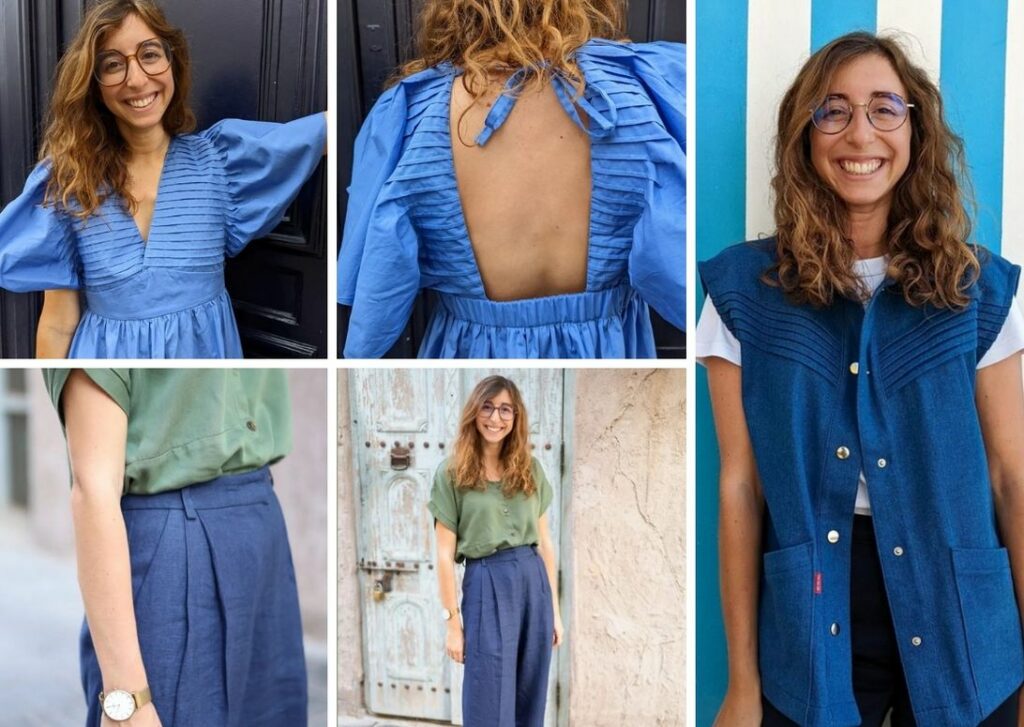
How do you approach pattern selection and fabric choice when starting a new project? What is your favorite fabric?
When I have a “coup de cœur”, I jump on a pattern, otherwise I love to start with a pattern and make some alterations. For the fabrics, I love structured fabrics like cotton because I love the volume it can give to a creation.
Her 4 Favorite
| Favorite fabric: Cotton | Favorite color: Green |
| Favorite print: Plain | Favorite designer: Belene Paris |
Where can we find you online?
On Instagram as debbie___8 .
Don’t hesitate to follow Deborah’s sewing journey on her Instagram. You’ll be amazed by what she makes!
We are delighted to present an interview with the talented British designer Victoria Cronin. In this week’s blog post, we delve into her colourful universe and we learn more about her design process, inspiration, and creative vision that make her lamps statement pieces in any room. Are you ready to be lit up?
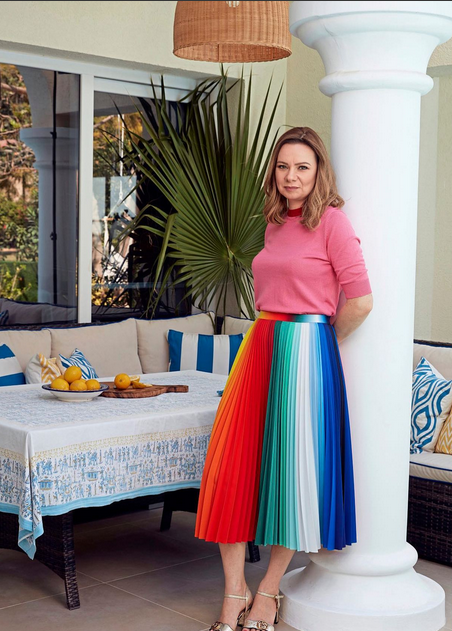
Can you shortly introduce yourself?
My name is Victoria Cronin, I am a British designer and have been living in Dubai for nearly 8 years now.
What you do for a living?
I run a boutique design studio with a vision to use sustainable and ethically sourced, artisanal craftsmanship to create exquisite home and lifestyle products. I also teach Architecture at American University in Dubai.
What brought you to this activity?
I am a trained architect but after moving to Dubai I embarked upon interior design and have now expanded into product design.
What inspired you to start using fabric to make lamps, and how did you get started with this type of design?
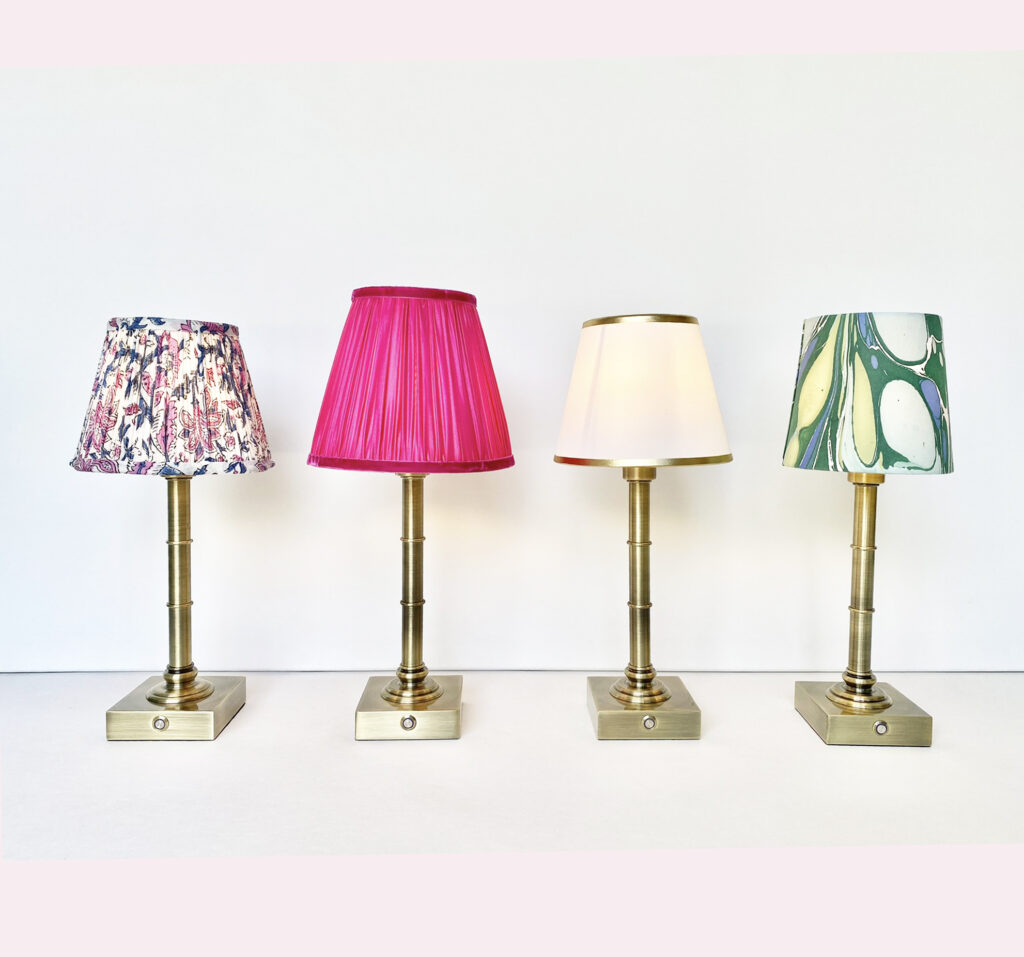
I was looking for some gathered fabric lampshades for my own home and could not find any local suppliers, so I started making them myself. I like to use artisanal textiles such as hand woven ikat silk from Uzbekistan and hand block printed cottons from India. I have now expanded my collection to drum shaped lampshades and am now designing and manufacturing my own range of lamp bases.
Can you walk us through your designing process for creating a fabric lampshade, from conceptualization to end product?
For my studio collections, I first select the fabric and consider its suitability for a smooth or gathered lampshade. Colour and pattern is also very important as I need to consider how it will coordinate within an interior design scheme. If it is a custom lampshade commission, then often the client will have a colour or fabric in mind. I will then help guide them on the proportions for their lamp base and the choice of any trims or adornments.
How do you choose the fabrics you use in your lamps, and what qualities do you look for in a fabric when selecting it for a lamp design?
Fabric selection is very important when constructing a lampshade. For gathered shades, the fabric has to be relatively fine and flexible as it needs to be hand stitched into a cotton bound frame. Often the needle needs to penetrate a number of layers of fabric. It also helps to have a fabric that does not fray a lot, as for smooth shades, the fabric needs to be tucked in around the edges of the frame so we cannot have fibres coming loose. Thicker fabrics such as velvets and loosely woven fabrics such as linen are much harder to work with, although not impossible.
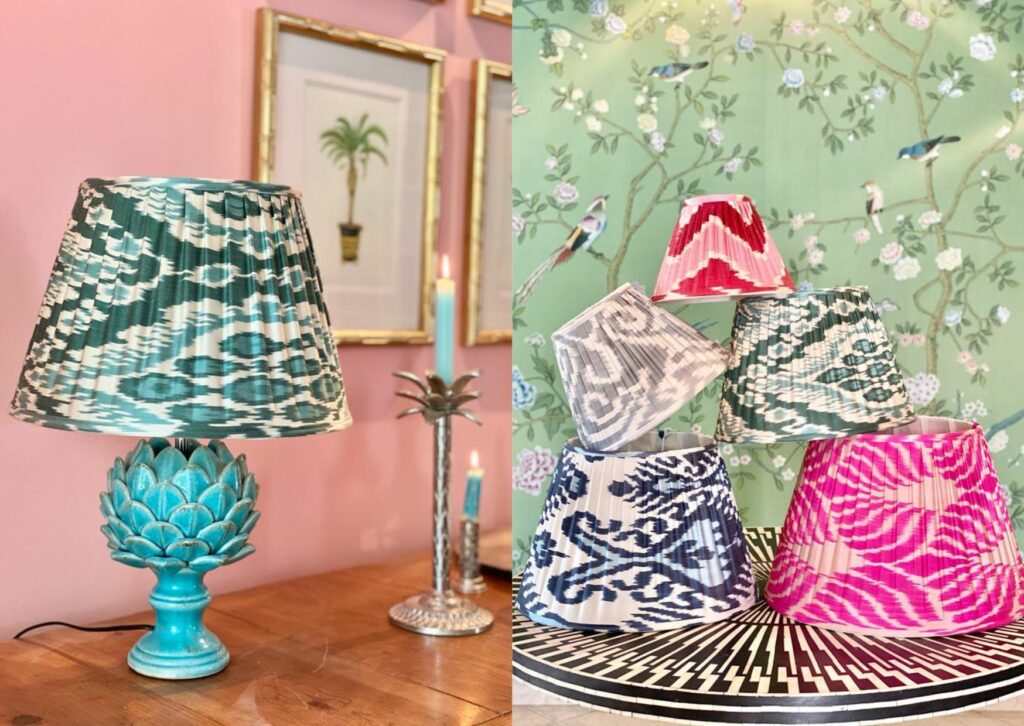
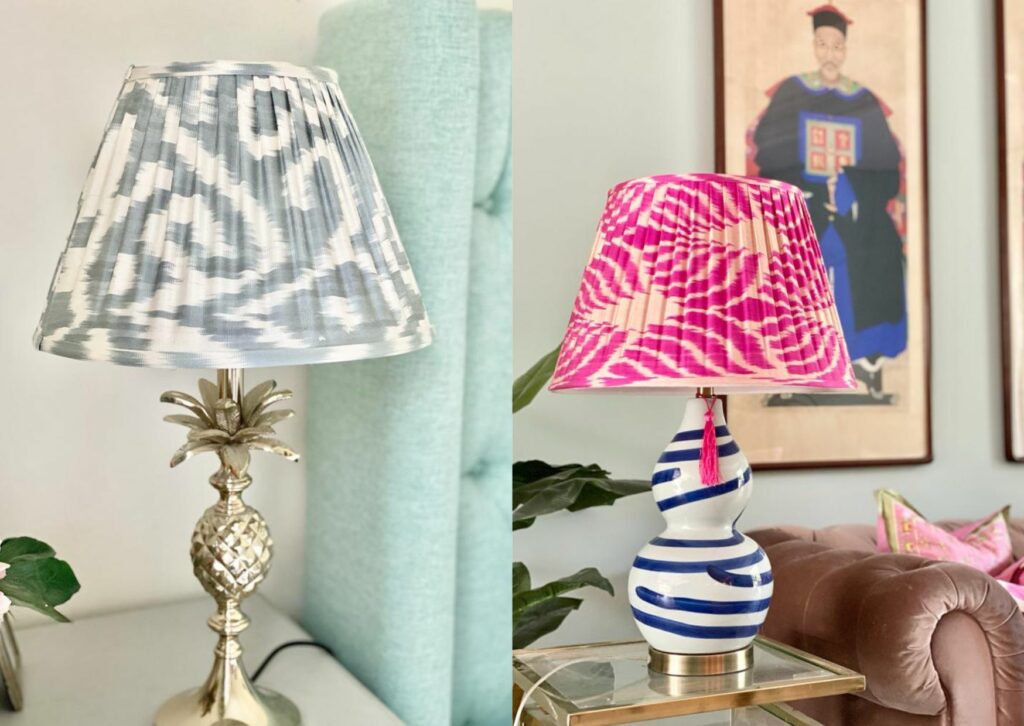
Some silks are difficult to work with, particularly for adhesion to lampshade panels, because any lumps, bumps or bubbles in the fabric will become obvious. Also, a loosely woven fabric such as linen is very tricky. I often use a diluted PVA glue in order to stop the fraying edges.
How do you approach the use of color and pattern in your fabric lamp designs, and what impact do these design elements have on the end product?
The scale and repeat of a pattern is a big consideration. I have to ensure that the pattern is visible and appropriate for the dimensions of the lampshade otherwise some details can get lost. Some patterns are better for table lamps rather than pendant shades, so the viewing angle and height also needs to be thought about. If the lampshade is to be gathered, then obviously the pattern on the fabric will be lost somewhat as the fabric folds. However this is also an opportunity to create a different visual effect. For example a gathered ikat is lovely.
Regarding colour choices, the impact of the exterior shade colour needs to fit the room within with the shade with be situated. However, the effect of light shining through a fabric is also very important to consider. Equally, the colour of the lining of a lampshade can also make an impact on the diffusion of light.
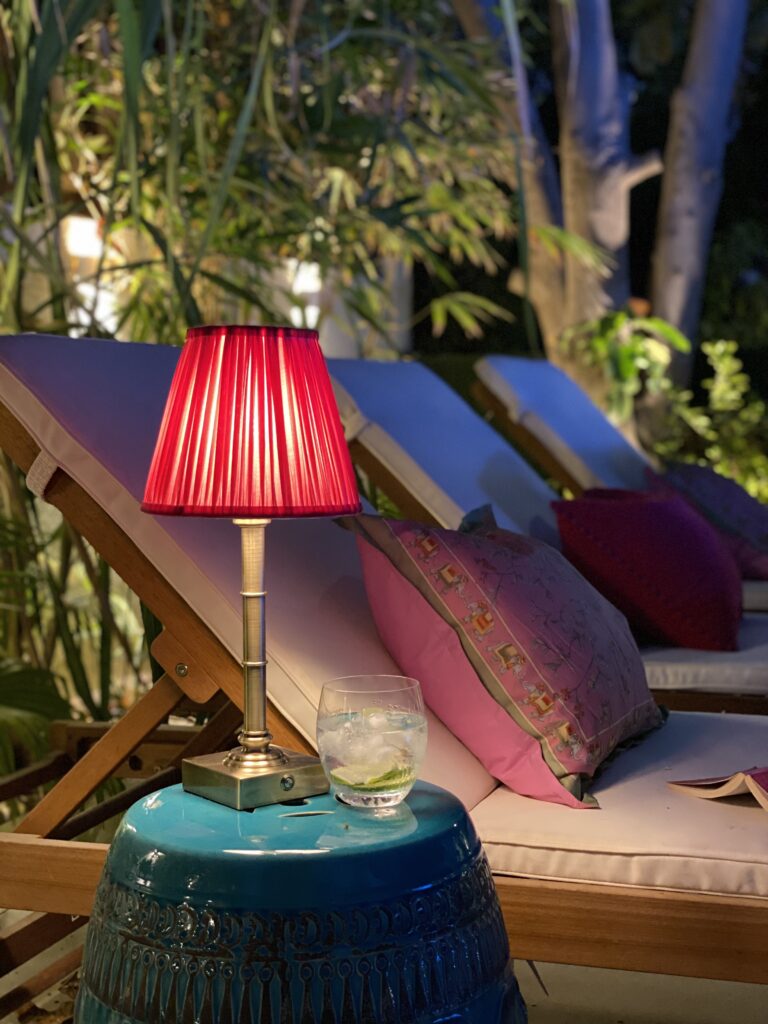
What role does sustainability play in your design philosophy, and how do you incorporate sustainable practices into your lamp-making process?
Whenever possible, I do try and recover old lampshade frames. The shade structure panel I use are made of recyclable PVC. As lampshades don’t need a huge amount of fabric, it is possible to reuse textiles, even old dresses or scarves to create a lampshade. I also ensure that my packaging is all recyclable. I feel that a hand made item for the home, and particularly one that uses artisanal hand crafted fabrics, has more longevity. Rather than picking up a machine glued cheap lampshade from Ikea, using a silk gathered lampshade in your home will age better as it is a more timeless design and I hope could even be passed down generations.
Where do you find your creativity?
Gosh what an interesting question, I’ve never thought about it before! I suppose it is just instinctive. I just feel the constant urge to create but I do need the time and to be in a relaxed mindset to work. I feel most relaxed when I have a connection with nature. I found this very hard when we first moved to Dubai, but after creating my dream garden and collecting a menagerie of pets, I am very happy amongst the palm trees and green parrots. This certainly helps to get my creative juices flowing! Travel is also a constant inspiration for me. I love to learn about different cultures’ patterns, design and also often look to history for inspiration.
How to contact Victoria?
You can find out more about Victoria’s work on Instagram under @victoriacroninstudio or on her website www.victoriacronin.com
Looking for quality fabrics? head now to our e-shop La Cotonnerie

As you might know, La Cotonnerie imports different textile products from Guatemala such as handmade cushion covers and blankets. These items are made of 100% cotton using traditional techniques and are crafted by skilled artisans. These products are unique and reflect the rich cultural heritage of Guatemala. By importing these products, La Cotonnerie is not only helping to preserve traditional art forms but is also providing a market for these artisans to sell their products and earn a fair wage. We wanted to introduce one of the weavers we are working with. We hope you will enjoy the interview!
Can you introduce yourself shortly?
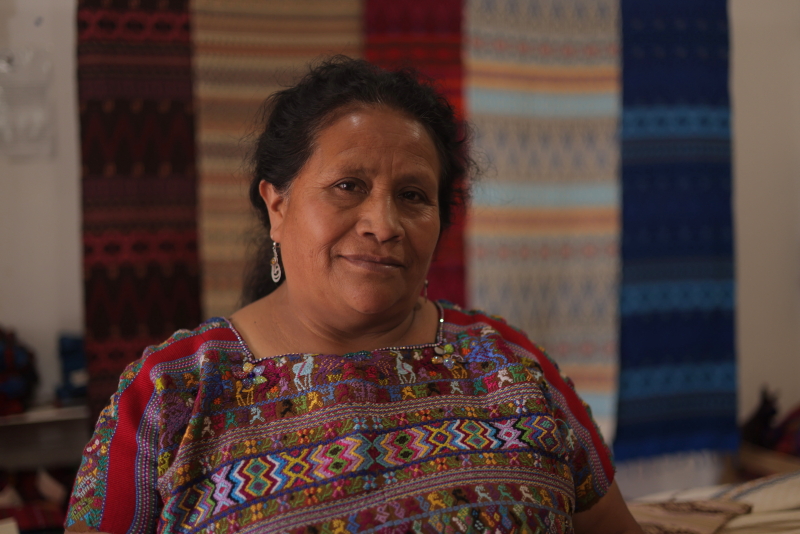
My name is Lidia and I am from San Juan Comalpa, in the Department of Chimaltenango, Guatemala. I have seven kids: five daughters and two sons. Five of them are married. I am a widow.
Since when do you weave and how did you learn?
I weave since I am a kid. I started when I was 8 years old, as in my community we weave our own clothes and huipil. I learned by looking at other women weaving and my sister also taught me, as I grew up without my parents.
What do you mostly weave and how long does it take?
It depends on the design and on what the person wants or needs. Also, it depends on the type of fabric. However, some projects can take weeks, months or years, if it is a huipil.
Do you use natural dye?
Yes, we use natural tinted cotton threads.
How important and what impact does weaving have in your life? Can you make a living from it or do you need a side job?
We live from that job. Thanks to weaving, we can give everything to our children. It is a secondary job, when there are not many orders. But, when we receive orders, we can make ends meet just with this job.
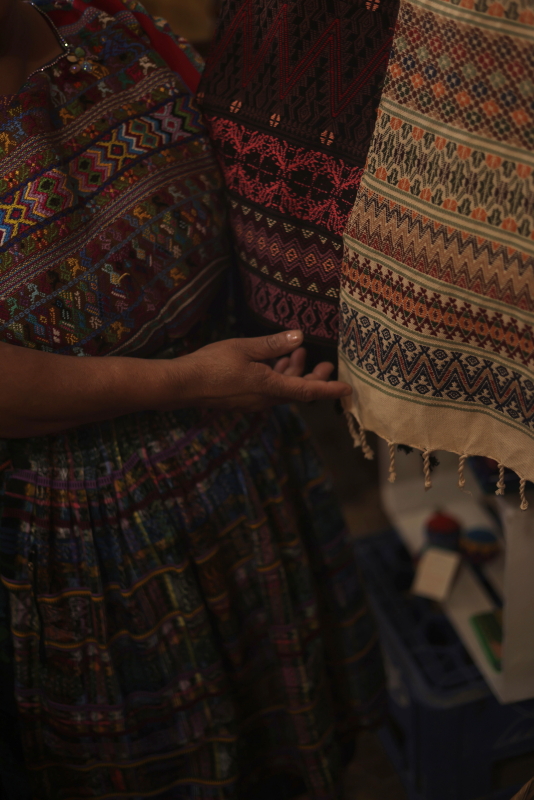
Your products are sold in several countries around the world. How does that make you feel?
Happy! Because if we sell a lot of our products, we can be happy, as we can see that people like our job.
Is weaving something that only women do?
Yes, just women weave. Men do other kinds of jobs, such as cultivating, working as masons, as carpenters, bus drivers… All these are their jobs.
How important is weaving in your community? Is that something that is done alone or do women gather to work?
It is very important and it is a pleasure to share our pieces and our knowledge related to weaving. Women work alone in this job in their houses, but we get together to discuss the designs, the colors to use, etc.
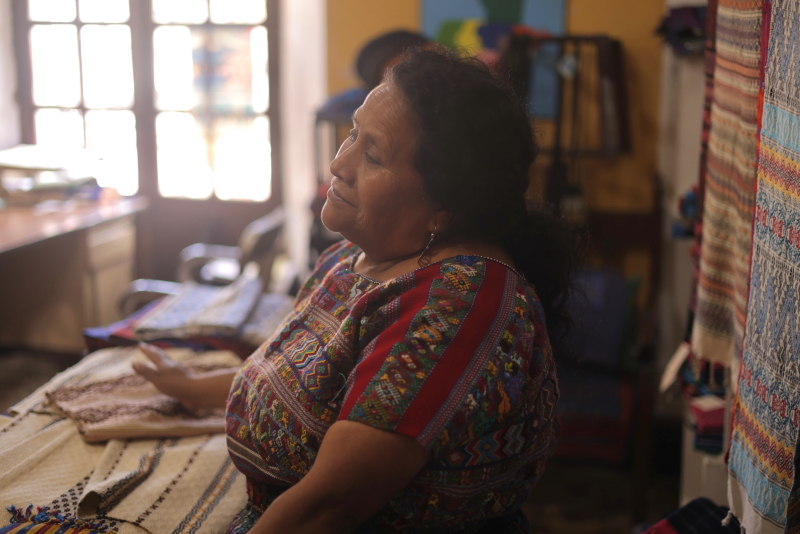
Is weaving something that you want to transmit to your children? Are they interested in learning this craft?
Yes, it is a benefit for our children because there is money thanks to the job and so weaving helps us. Now, my children are studying. But my daughters also weave, because it is the tradition in our community.
Very often on cushion covers for instance, there are animals represented. How important is Nature for you? What is your relation with Nature?
It is possible to weave characters, animals, birds, roses… anything. However, the Nature is very important, we learn from her. For instance, to sit in a blade of grass and weave there is very joyful. The mind clears itself and some bring their animals to feed in the nature while weaving in their company.
Weaving has been a tradition in Guatemala for thousands of years, with evidence of textiles being produced by the Maya civilization dating back to as early as 600 BC. The Maya developed a sophisticated weaving culture, using cotton and other natural fibers to create clothing, accessories, and household goods. They also used weaving as a form of communication, incorporating symbols and designs that conveyed important cultural and religious messages.
The indigenous communities of Guatemala are skilled in creating vibrant and colorful textiles using traditional techniques passed down from generation to generation. These techniques include back-strap loom weaving, where the weaver sits on the ground and uses their body weight to stretch the threads, and foot-loom weaving, where the weaver uses their feet to control the tension of the threads.
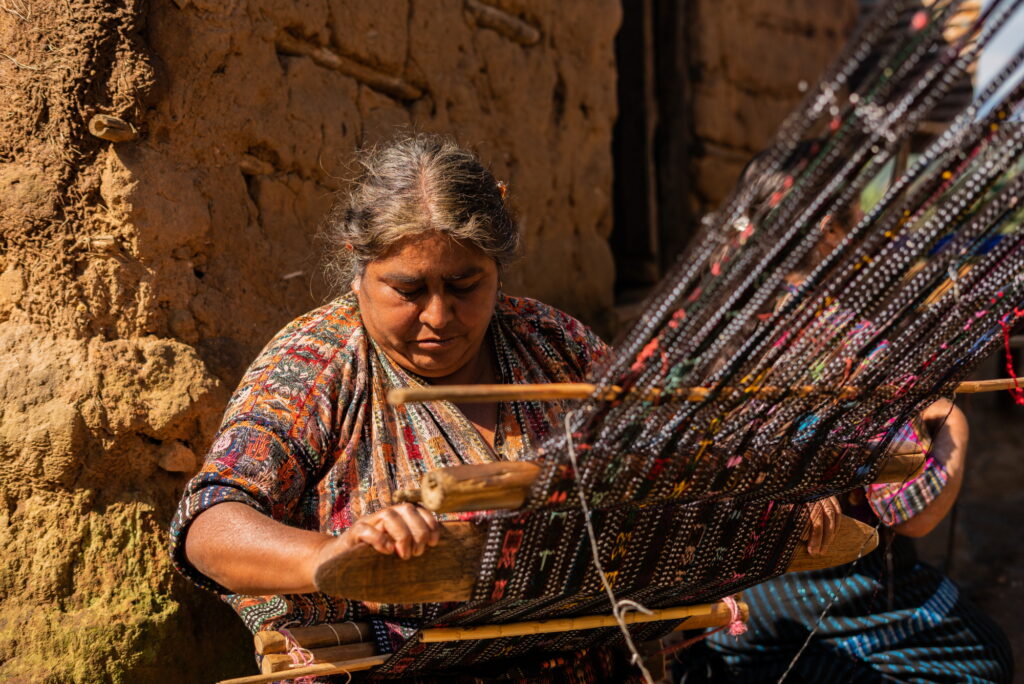
One of the most notable regions for weaving in Guatemala is the highland region of Chichicastenango, where the indigenous K’iche’ people produce intricate textiles featuring vibrant patterns and bold colors. These textiles are often used in traditional Mayan rituals and ceremonies, and have become a symbol of Guatemalan culture.
Another important region for weaving in Guatemala is the town of San Antonio Palopo on Lake Atitlán, where the local Kaqchikel Maya people are known for their fine hand-woven textiles, including brightly colored clothing, table runners, and bags.
Today, the weaving tradition in Guatemala continues to thrive, with many young people learning the skills from their elders and preserving the rich cultural heritage of their communities. The textiles produced by these weavers are not only beautiful works of art but also serve as a vital source of income for many families in the country. Most of the time, this craft is done by women.
The weaving tradition in Guatemala is a testament to the country’s rich cultural heritage and the skill and creativity of its indigenous communities. This tradition continues to play an important role in the lives of many Guatemalans and is a source of pride for the entire country.
Traditional Guatemalan textiles feature vibrant colors and complex designs, many of which have symbolic meanings and cultural significance. Some common patterns found in Guatemalan weaving include:
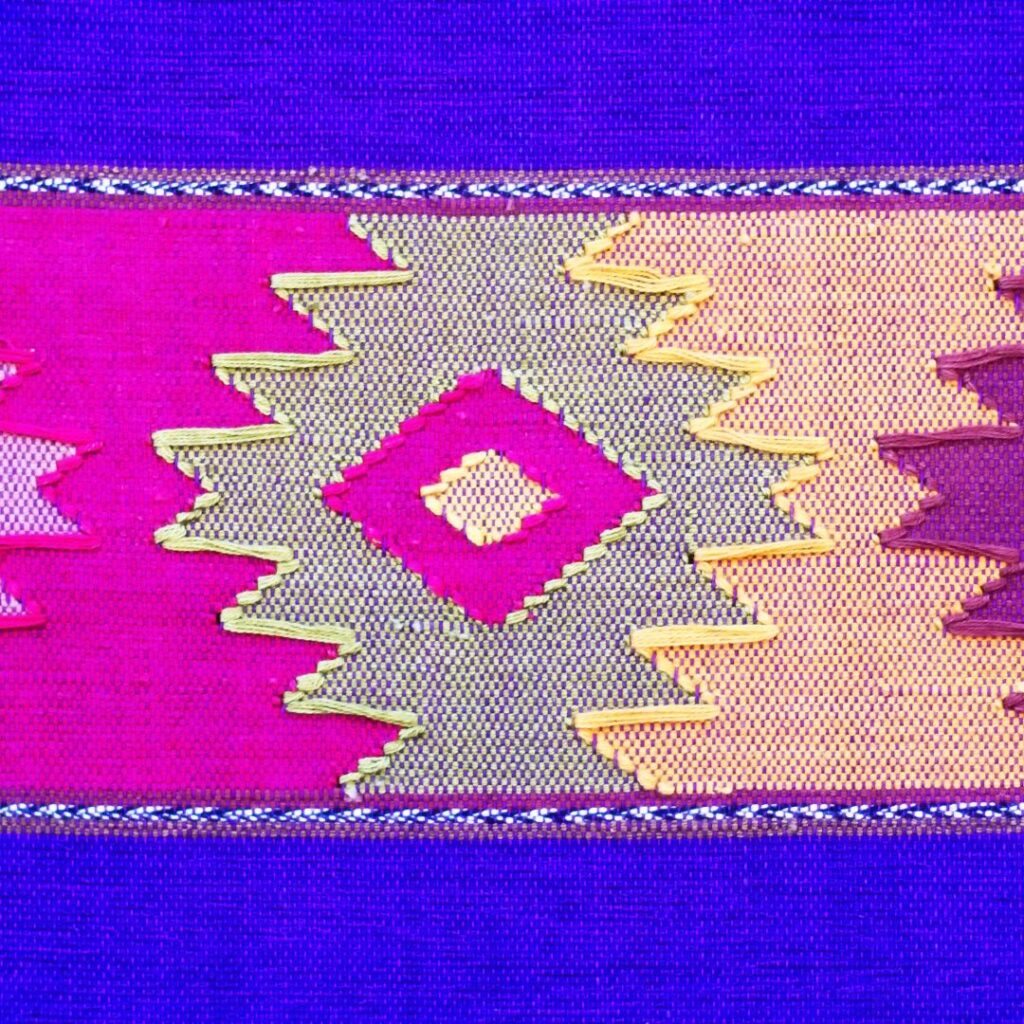
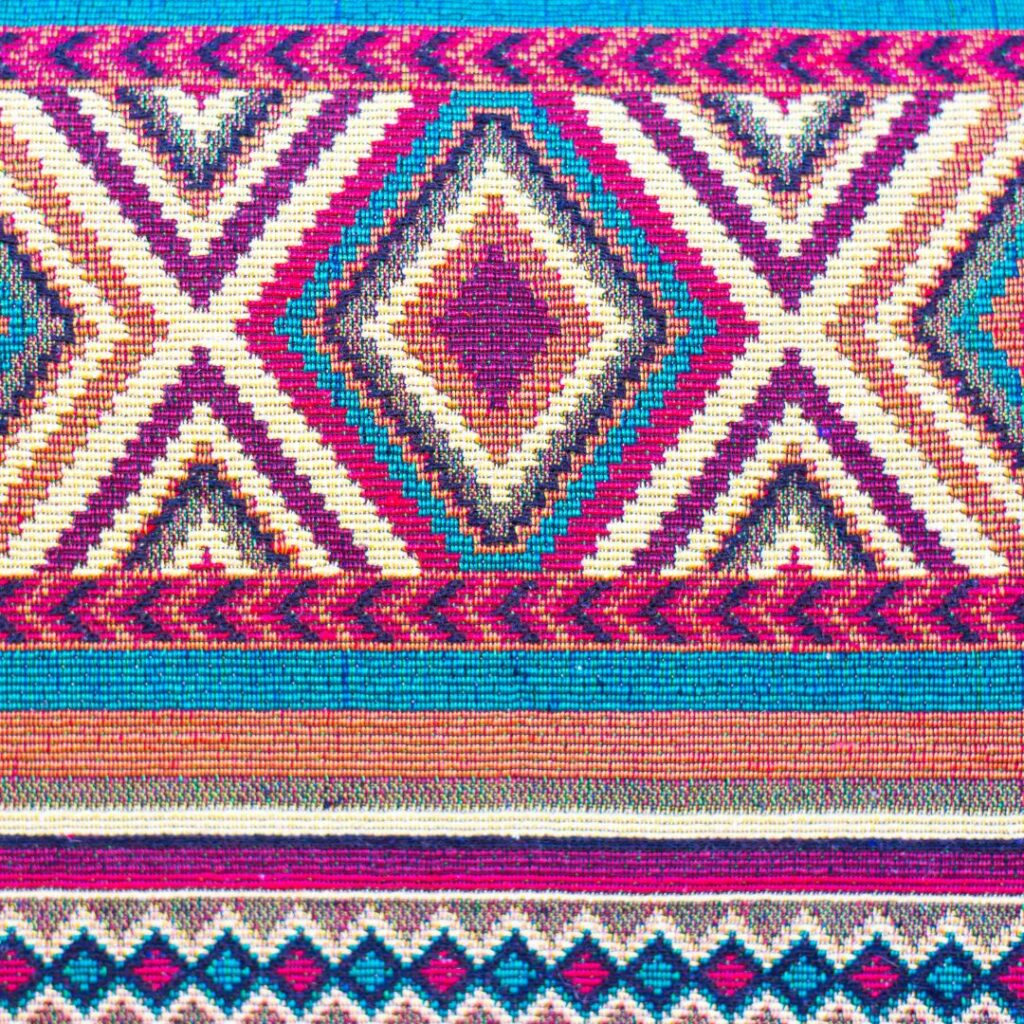
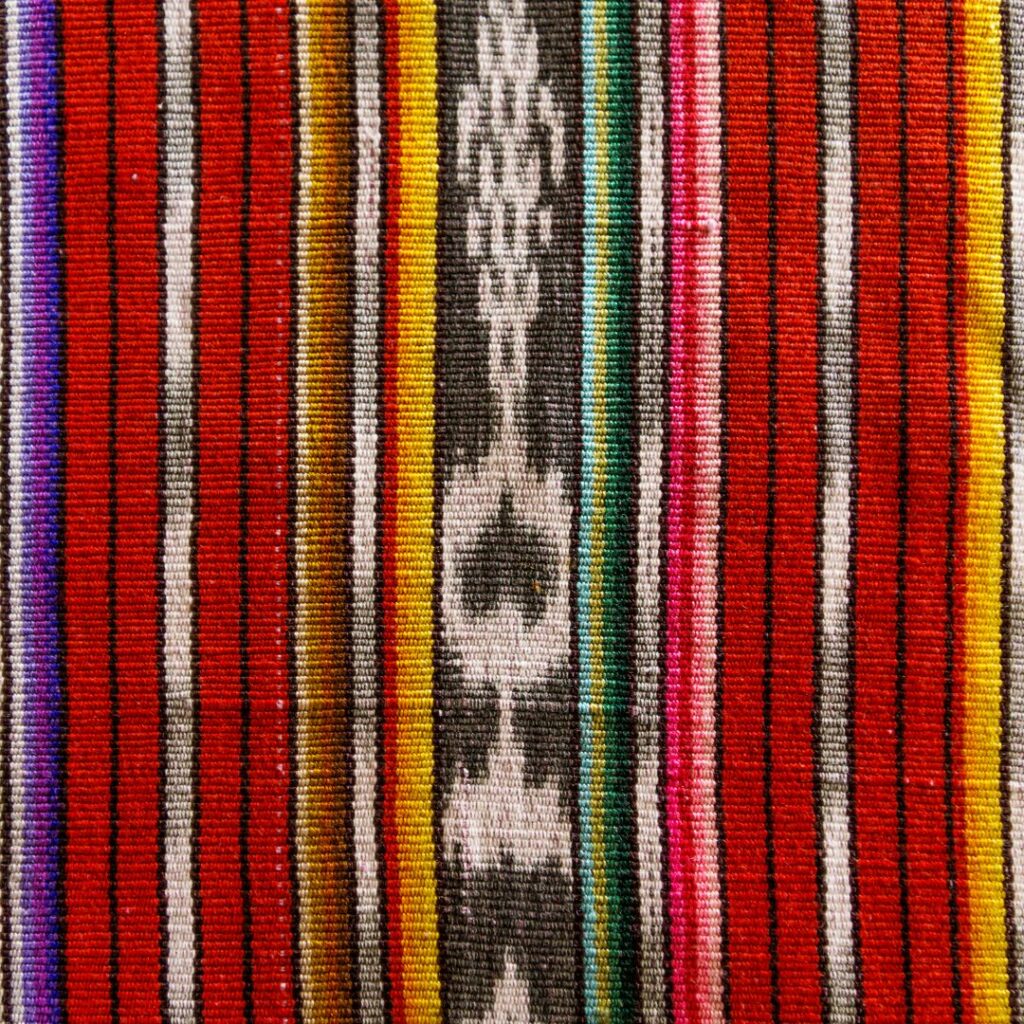
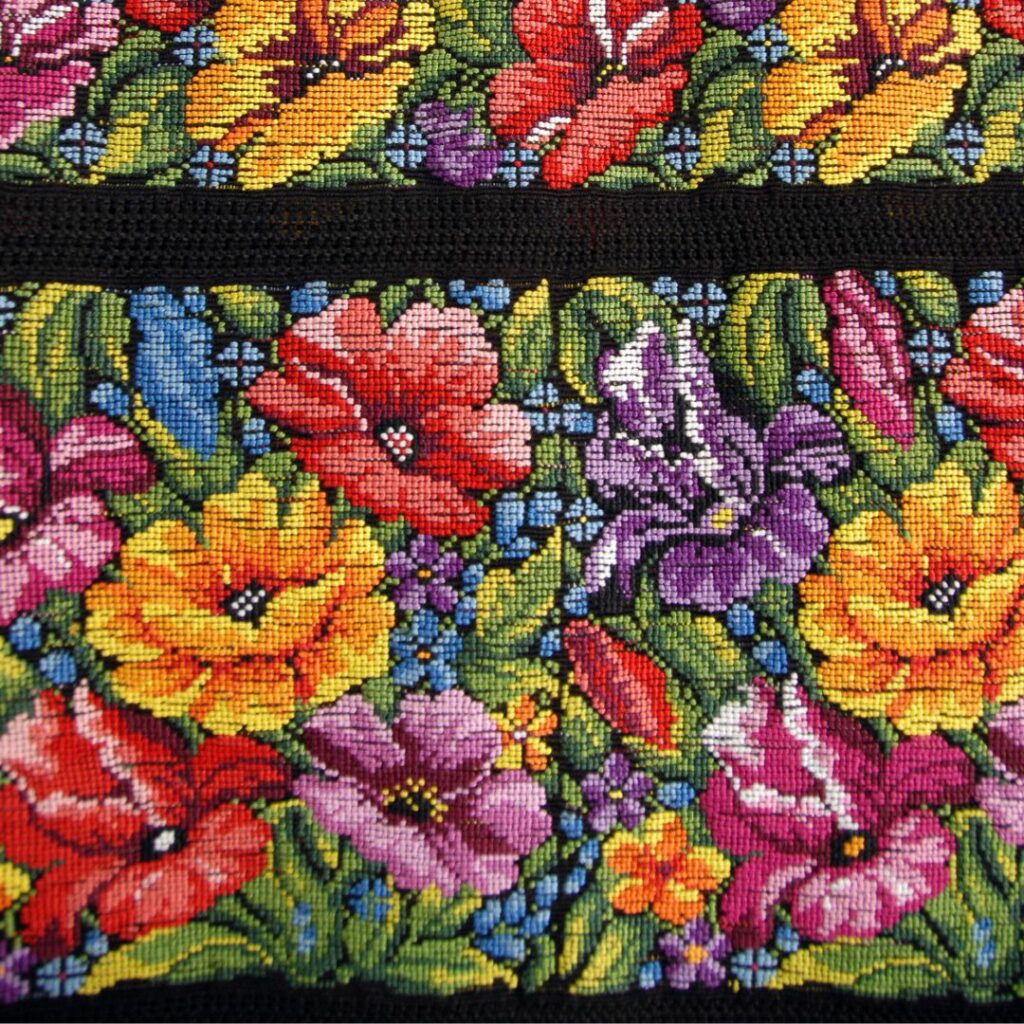
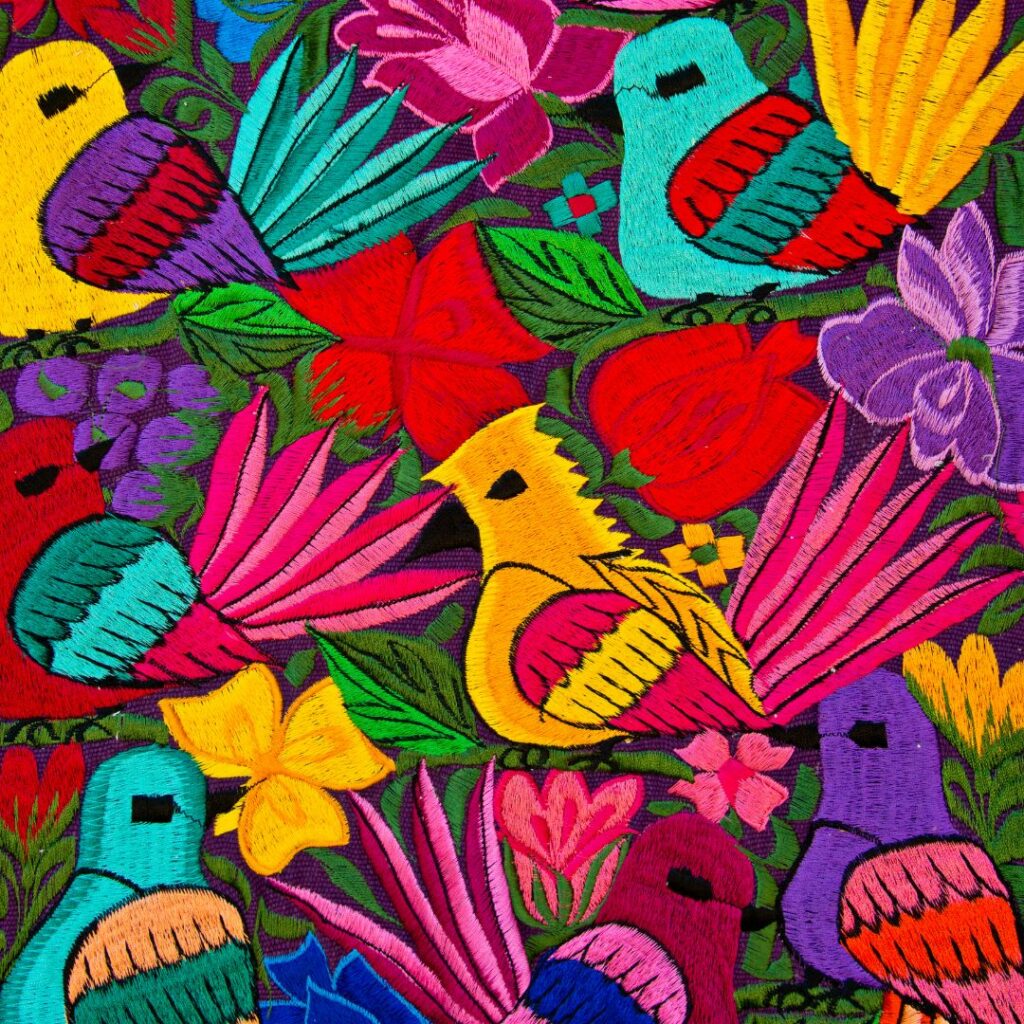
At La Cotonnerie, we have a wide range of beautiful cushion covers as well as bed runners from Guatemala. Handmade and 100% cotton, these are the right pieces if you want to color a room. These items are sourced directly from the weavers, which are exclusively women. It allows them to earn a fair salary and support their family. Guatemala has a long tradition of weaving which started over 1,500 years ago with the ancient Maya civilization. So you not only buy a decorative item but also a piece of traditional craftsmanship.
To shop: www.lacotonnerie.com
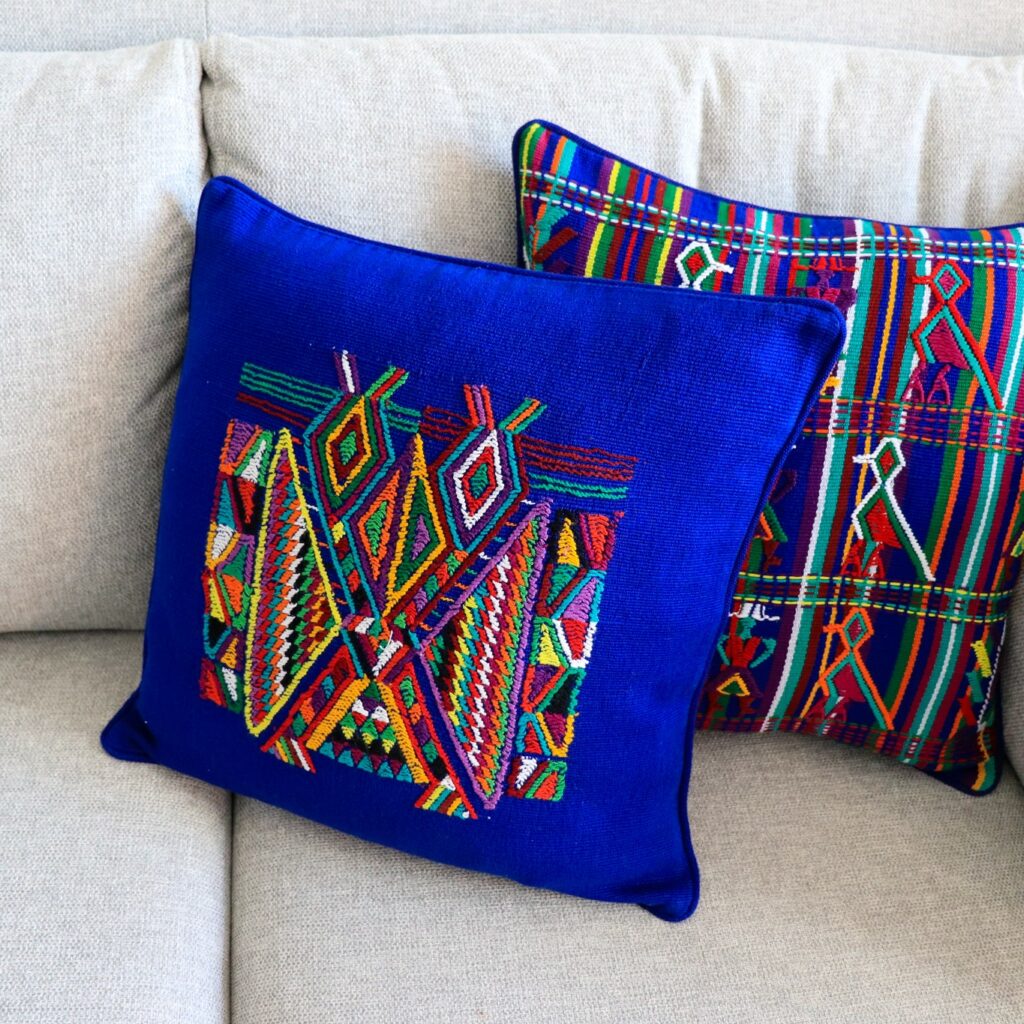
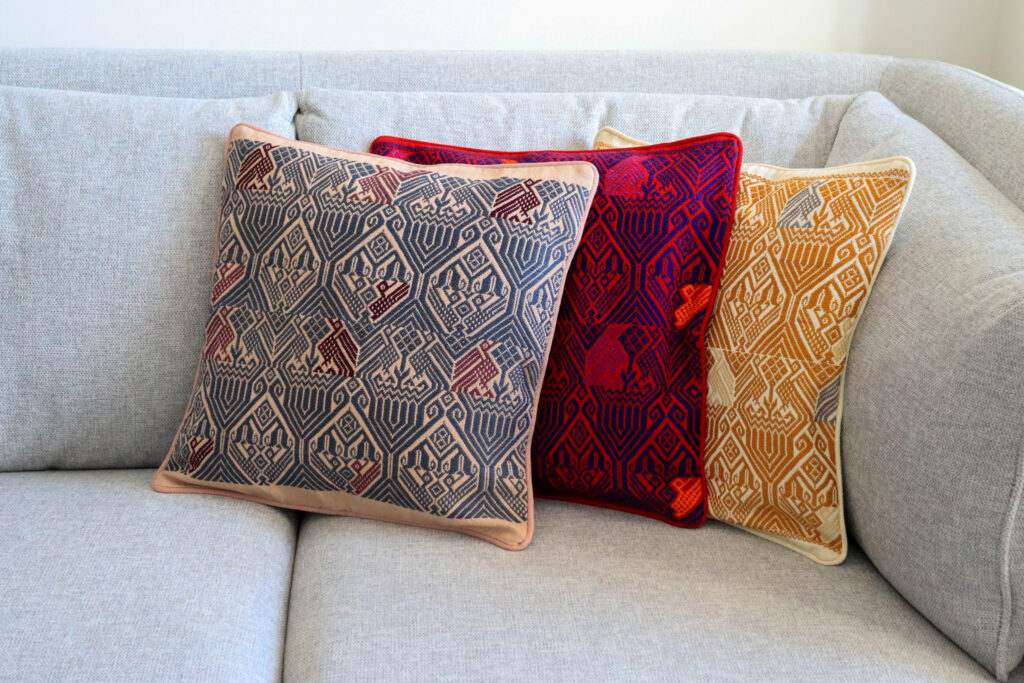
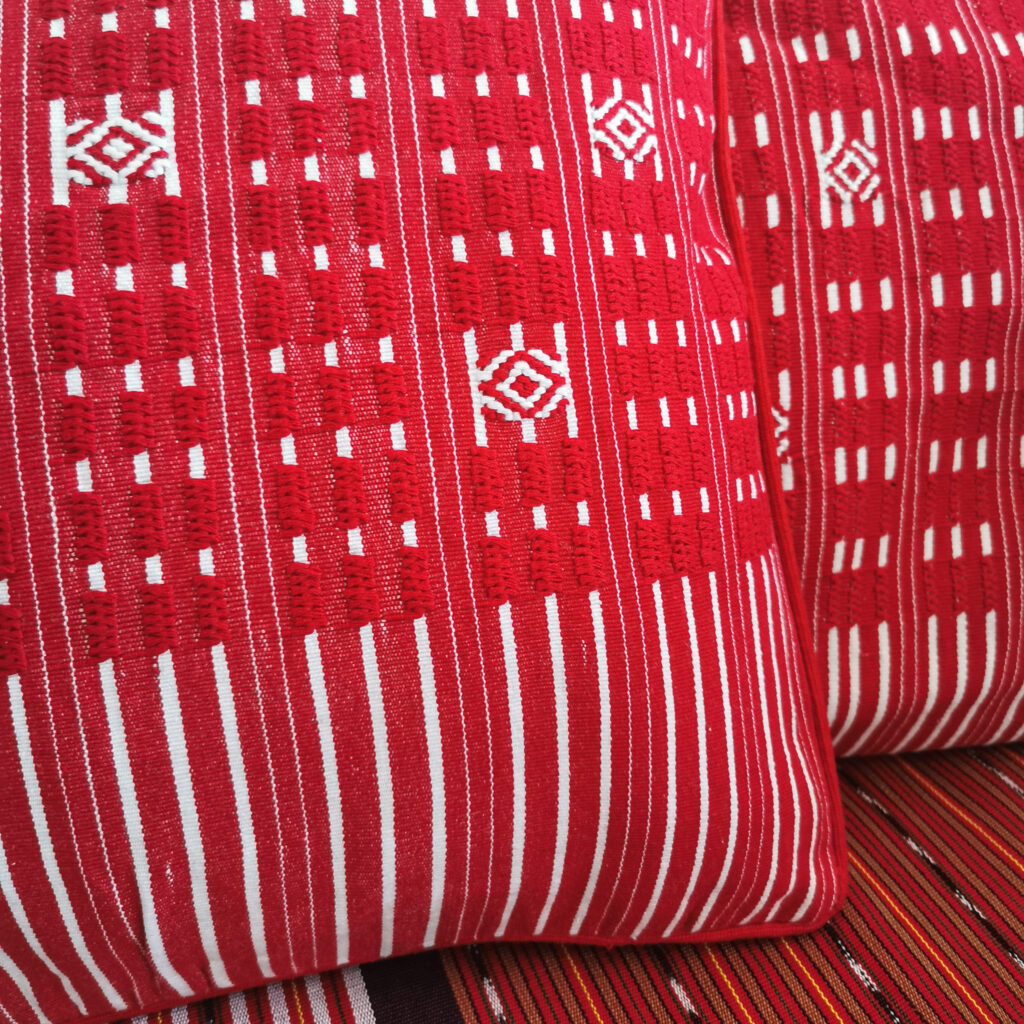
Toile de Jouy, also called “Jouy Print” or “cloth from Jouy” is a cotton fabric which was created in France, in Jouy-en-Josas, a town close to Versailles, in 1760 by Christophe-Philippe Oberkampf. It is a type of Indiennes (Indian cotton fabric) which describes printed or painted textiles manufactured in Europe between the 17th and the 19th centuries and inspired by textiles made in India. The word “Toile” means fabric.
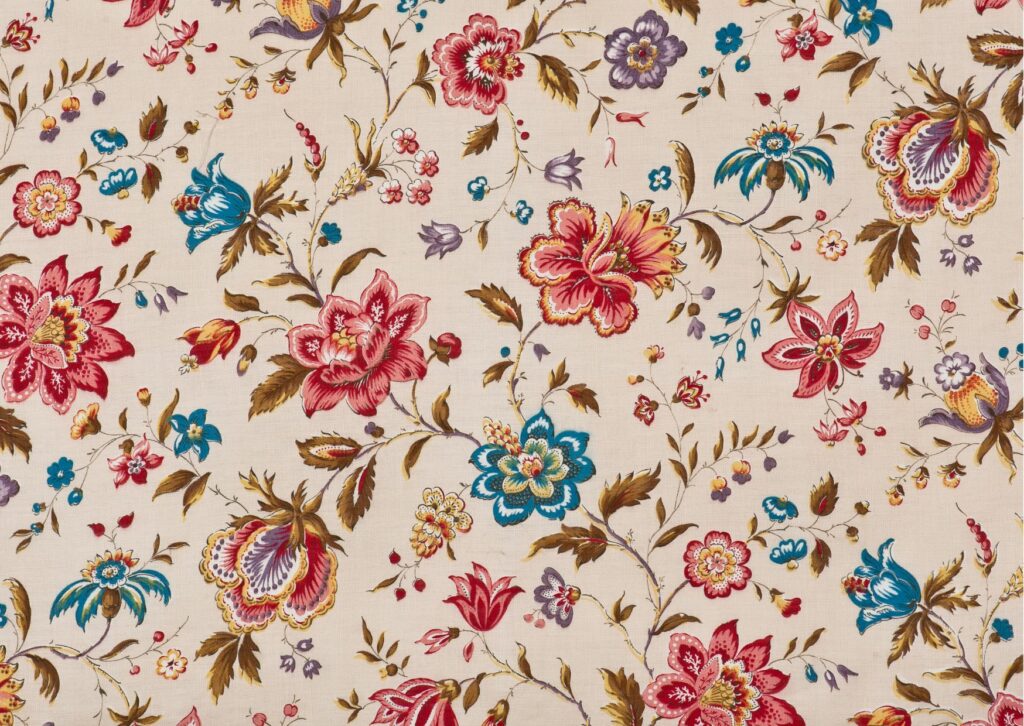
In the early 1600s, France was heavily importing Indian cotton which soon became a fabric of choice; even more so when the East India Company was established. Unlike the fabrics used back then such as silk, linen and wool, cotton was resistant, inexpensive and easy to wash. Nonetheless, it soon became a threat to the local textile industries and several European countries imposed a cotton ban in 1686. Once the ban had been lifted, Christophe-Philippe Oberkampf founded his factory and took the opportunity to manufacture indiennes and print on cotton.
Historical events were recorded on the fabric, as well as depictions of populist themes. Apart from depicting events, Toile de Jouy is also characterized by floral or pastoral designs. Thanks to famous painters such as Jean-Baptiste Huet, the drawings on the Toile de Jouy have become really famous over the decades. Oberkampf was inspired by Rococo art and thanks to the help of Huet, they created more than 30,000 patterns.
Most of the time, the drawings were made of one color, either red, blue or black on an off-white background textile. However, it can also sometimes be found the other way around: off-white drawing on a plain color fabric.
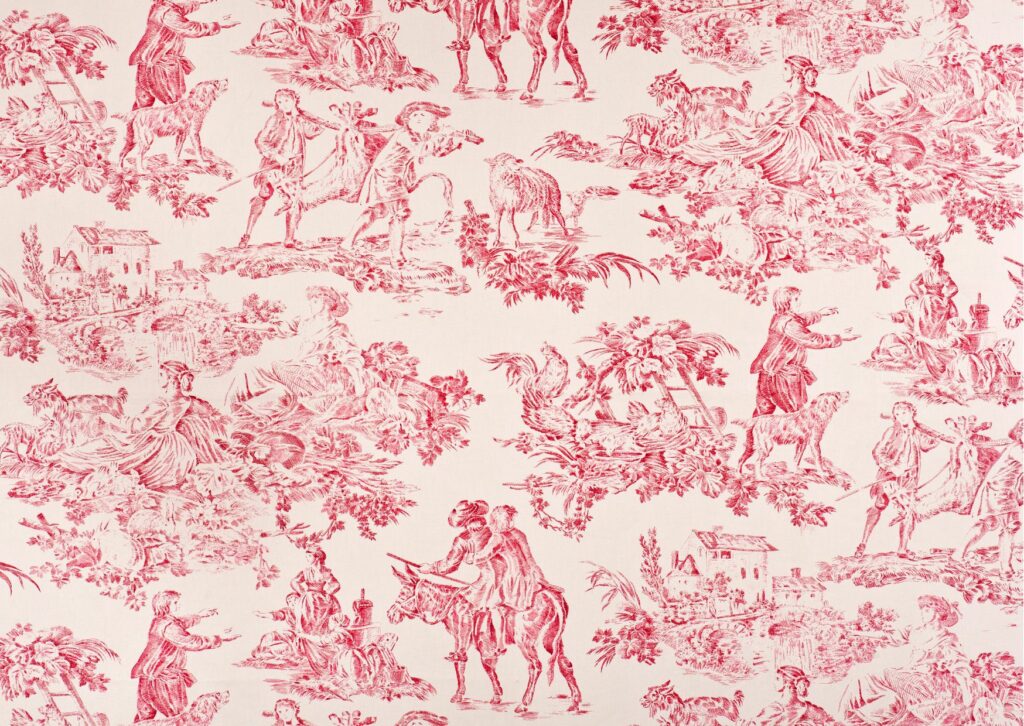
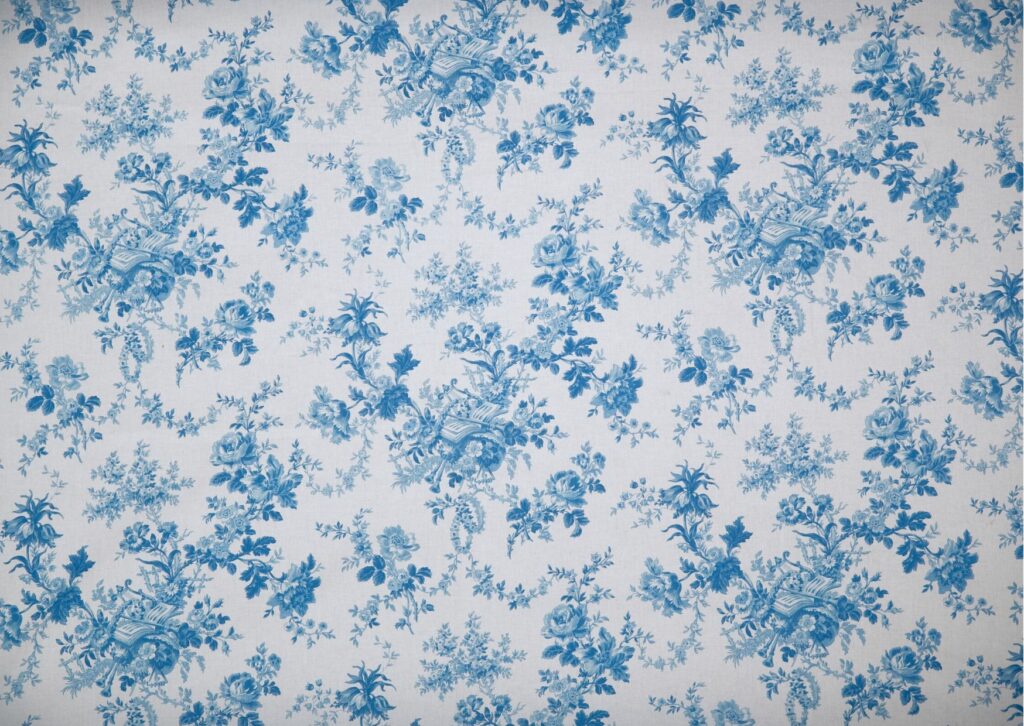
Even though its name comes from Jouy-en-Josas, it seems that the city didn’t have the monopoly in manufacturing this fabric. This textile was also produced in other cities in France, such as Mulhouse.
The patterns were previously printed thanks to wooden boards coated with dye. Later, copper boards were used for the printing. This last improvement increased the production of Toile de Jouy as the cooper boards could be transformed into cylinders which make the process much quicker.
It seems that Toile de Jouy became so famous that the queen Marie-Antoinette visited Oberkampf’s factory. The Toile was being so popular that it started being copied overseas too.
How is it used nowadays?
Toile de Jouy is used for different things nowadays. It can be found in decoration, such as curtains, wallpaper, as well as upholstery for chairs or sofas. Moreover, it is frequent to find fine dining or tea sets in these patterns. Finally, it is also commonly found in clothes for dresses or shirts.
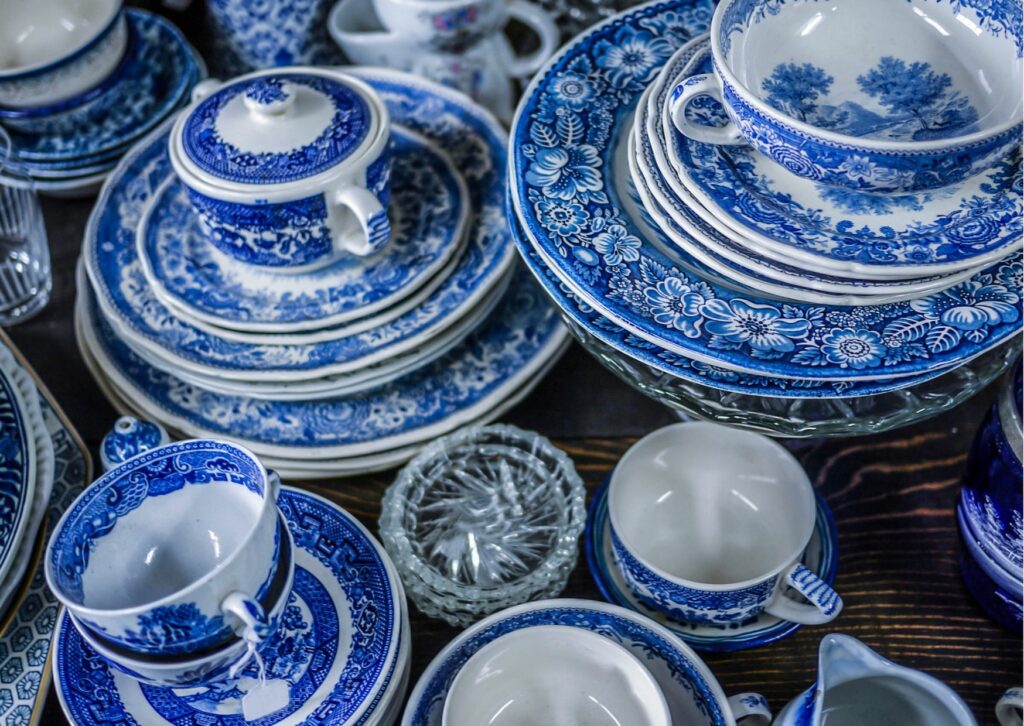
More modern patterns have also integrated the Toile de Jouy. It can now feature animals, plants, etc. Famous designers such as Dior, Chloe or Acne Studio used it a lot for their Summer 2019 Collection.
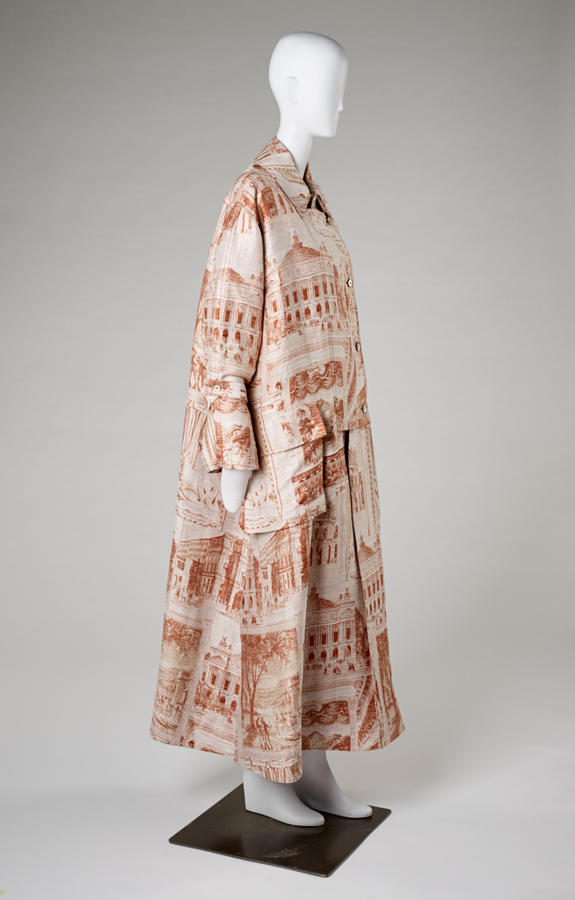

Have you heard of Toile de Jouy before? Write a comment on Instagram to let us know!
Want to buy quality fabrics? Head now to our e-shop La Cotonnerie to shop organic, ethnic or designer fabrics.
There is a lot of stories about the origins of the denim fabric and the jeans. We will tell you one of them here. Nobody actually knows how it all began. But one thing is sure, jeans don’t leave anyone indifferent!
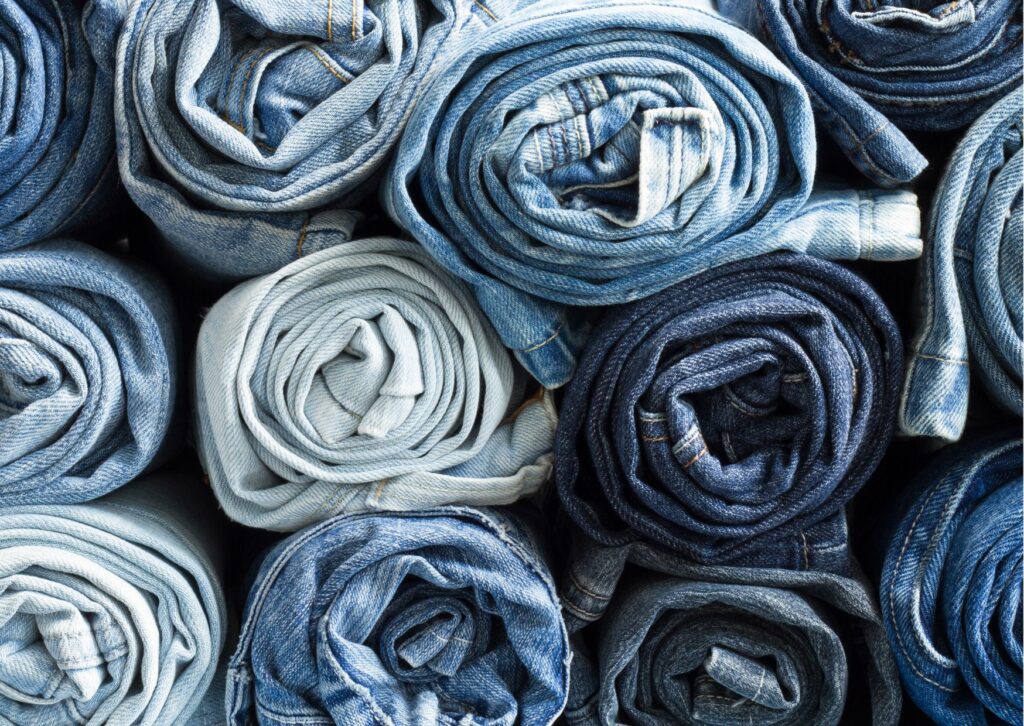
It seems it all began in the 16th century in Nîmes in the South of France, where denim was manufactured. This famous fabric was used for the manufacture of fustians and casaquins for the local population. The fabric was exported throughout Europe and the Mediterranean. Its name would come from the name of the city: “de Nîmes”.
However, after a law enacted in the region, by Louis XIV in 1685, prohibiting all religions outside Christianism, Protestant families manufacturing denim had to go into exile and found refuge in Genoa, one of Europe’s many trading ports. It is said that the word “Jean” is inspired by the name of the city of Genoa (or Gênes in French, pronounced jenn) because it was the lead importer of the indigo color characterizing the fabric. The famous blue color of the warp yarn comes from a dye called “blu di Genoa” (blue of Genoa). That’s where the name “blue jeans” would come from.

Many other French Protestants refugees (called Huguenot) had to leave France for Italy, but also for America, England, the United Provinces, exporting the fabric of Nîmes with them. The industrial revolution in the United Kingdom in the 18th century contributed in popularizing the Huguenot’s textile tradition in making denim. Hence was the British textile industry thereafter and for a long time the major actor in this field.
One of the legends about the origin of denim says that the weavers of Nîmes, envious of the success of the Genoese, tried at the time to copy the “jeans” of Genoa but did not succeed. It is thus accidentally that they gave birth to the textile known under the name of “denim”: “twill fabric of Nîmes”!
In the 19th century, denim was reserved to make the clothes which needed to be the most resistant. By adding robust rivets on the pockets of the jeans, a tailor called Jacob Davis and textile factory owner Levi Strauss created a sturdy pair of jeans. Jeans were then patented in 1873. It was the beginning of a success.
As years went by, jeans changed a lot as far as the creation is concerned. Originally jeans were appreciated by workers and miners thanks to the sturdiness of the material. After their creation, jeans were improved. For example, Levi Strauss added orange seams to make the material solid. The orange seams were the identification of the brand as well.

We can observe that jeans have been evolving through years and they have become more and more important.
For example, Hollywood presented jeans as a romantic object during the 1920s-1930s. They were worn by two famous actors such as John Wayne and Gary Cooper acting cowboys.
Jeans nowadays attract a lot of people by their difference in shapes, colors, whether they are new or secondhand. Not only are they synonym of holidays but also of work, as they are being worn in offices. From a symbol of rebellion in the 60s, they have now been democratized and adopted by many people around the globe. Who doesn’t have a jean in its wardrobe? Some would even speak about standardization, but that’s another debate!
Looking for quality fabrics? Go now to our e-shop La Cotonnerie!

The festive season is approaching and you are thinking of sewing your Christmas presents but you have no inspiration? Well, here is a list of 5 free online tutorials to make your presents and which will certainly make a statement.
Some of these tutorials require really little fabric, so they are a great way to use your scrap fabric and the majority of these projects are quick to make and accessible to beginners or confirmed beginners.
A few years ago, when I started sewing, I myself sew a lot of my Christmas presents. Among these were gym bags, reusable makeup remover pads and some heating pillows.
Before starting sewing your presents, you have to consider who you are offering a handmade present. Not everyone values and understands the time spent behind a handmade project. It would be a pity to put time and energy in making it and be disappointed by the reaction of the person. Therefore, choose carefully who will appreciate it!
Sewing your own projects requires that you list the material you need, take the time to buy it and take into account the time that will be needed to sew your presents. You may only have your weekends or evenings free, so make the most of it by being organized in advance.
If you want to offer sewn clothes, you should better be sure of the size or measurements of the recipient. As when buying clothes for someone else, sewing a garment to offer can be a bit risky. It is not uncommon that when sewing for ourselves, we have to make some pattern adjustments and sew a draft. If the adjustments have not been done before, we may have to do them afterwards. Therefore, sewing for yourself is not straightforward, so is it when sewing for someone else. You might spend a lot of time, put a lot of energy and love but the garment might end too small or too big.
Right, let’s get started with our inspirations now that you considered the people who will receive your gifts!
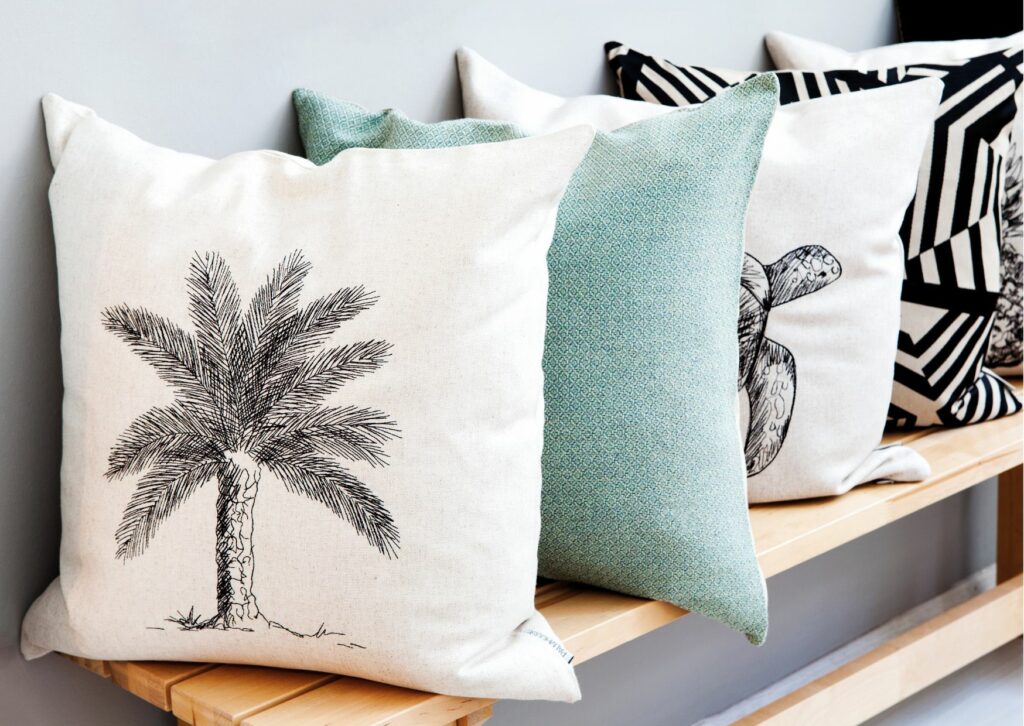
A simple but yet very impactful item is a cushion cover. Who does not like cushions? It’s currently really trendy to decorate a room with pillows, and depending on the fabric you choose, it brings color and originality.
This tutorial from Treasurie is accessible to beginners and allows you to sew a cushion in one piece of fabric and in a very little time: https://blog.treasurie.com/how-to-make-cushion-covers-envelope/
A video comes with the tutorial which makes it easier to understand.
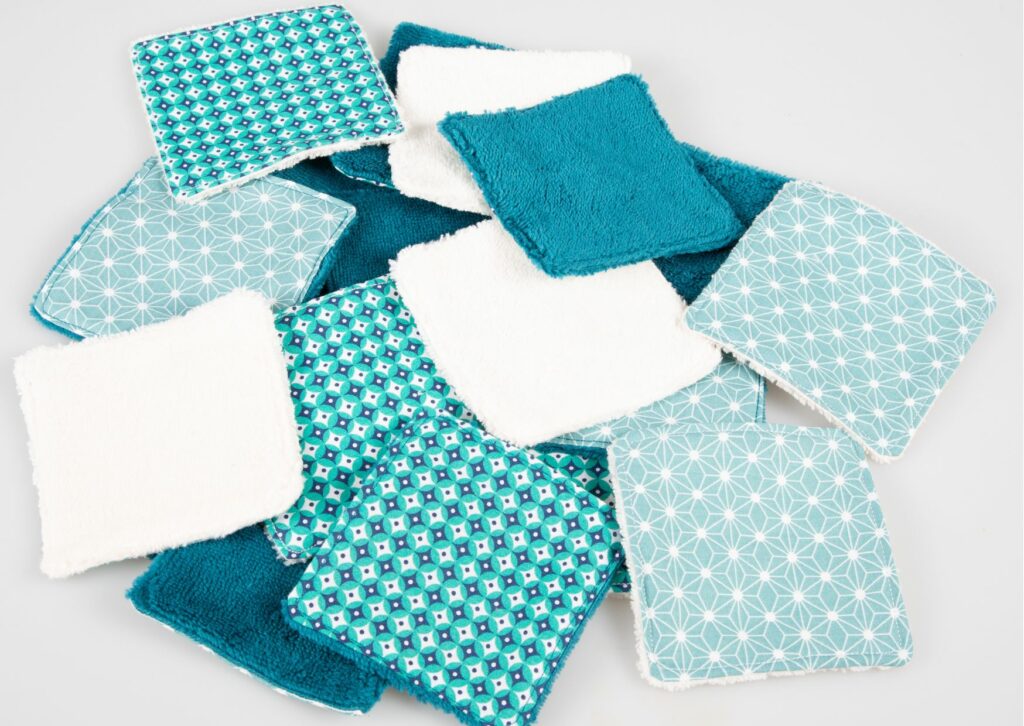
What about sewing reusable makeup remover pads? They are quick to sew and mainly sustainable and economical. We would recommend to use organic cotton if possible, and instead of flannel, as in the tutorial of Happiest Camper, we suggest to use bamboo toweling for the part in contact with your face as it is less abrasive for the skin.
Who doesn’t need a toiletry bag for holidays, the gym or simply to use at home to put make up or beauty products in it? Depending on your fabric choice, you can either sew one for a man or a woman. Sewing a zipper might be impressing at first if you have never done it before, but with the right presser foot, it should be fine.
Stefanie Goldsmith’s video tutorial will guide you through the steps.
I also liked this tutorial of Wunderlabel to make a flat make-up bag. It seems really simple and the fabric you choose can totally make a statement: what about some African wax fabric or lovely geometrical prints? https://wunderlabel.com/blog/p/zipper-pouch-tutorial-how-to-sew-a-makeup-bag/
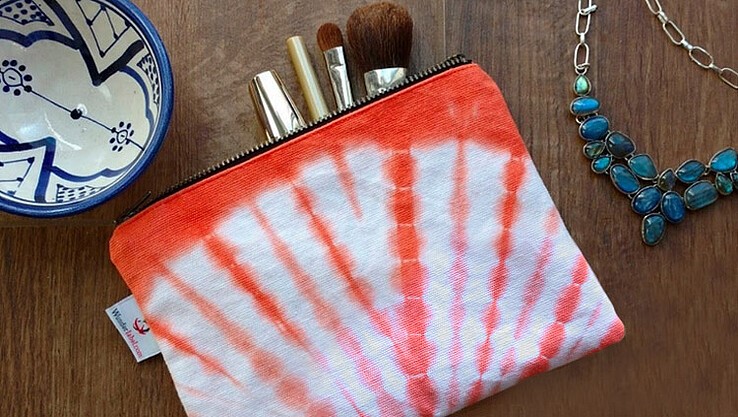
A tote bag was the first item I sew when I was offered my sewing machine. Tote bags are great for beginners. It is pretty much rectangles sewn together. You can make it more original if you sew two different fabrics, or add colorful handles for instance. Canvas is a great fabric to use for tote bags as it gives it sturdiness. But you can also use a thinner cotton to make it.
Melanie Ham’s tutorial: https://melaniekham.com/how-to-sew-a-tote-bag-learn-to-sew-series/
Follow along the steps on the video:
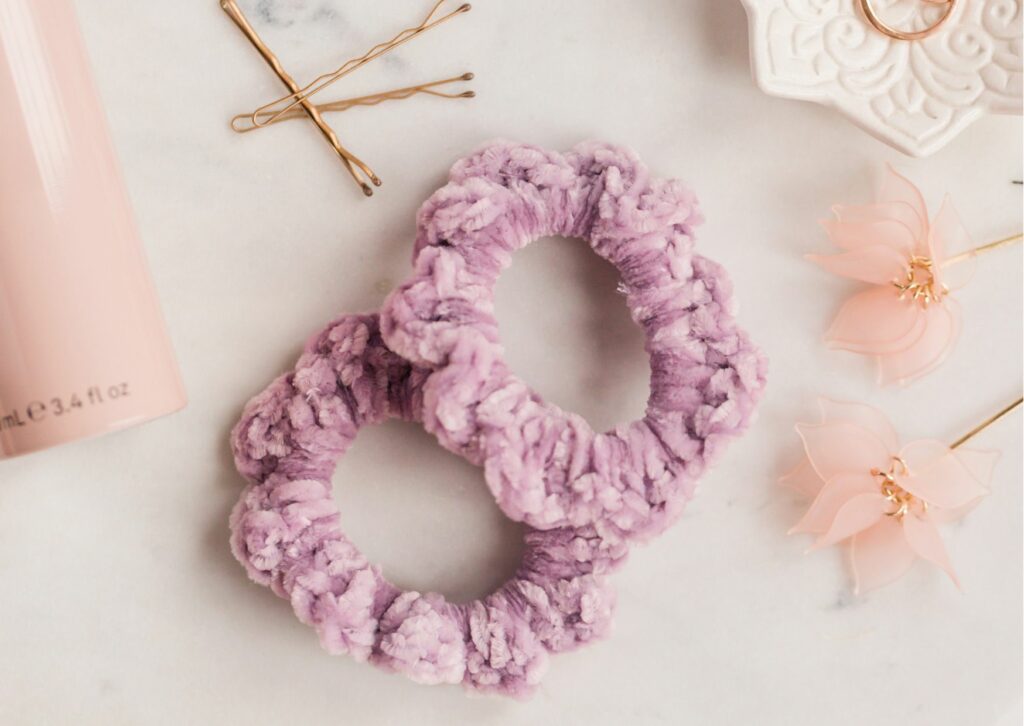
Scrunchies are always cute and useful. Choose a lovely patterned fabric like flowers, dots or English embroidery. It doesn’t require much fabric. Offer them by a bundle of three, the recipient will surely love them.
Threads Monthly’s tutorial: https://threadsmonthly.com/diy-scrunchie-with-hair-tie/
As usual, click on this link to watch the video tutorial. It is a new method to make scrunchies – it also seems pretty easy:
And you, what do you plan to sew for Christmas? Let me know in comments on Instagram!
Looking for beautiful fabrics? Head now to La Cotonnerie e-shop!
Saying that Natalie is a creative person would be an understatement. She is a “touche-à-tout” as we say in French. She has her hand in many creative crafts and everything she touches becomes art. Not only the quality of her sewing is exceptional, she is also very talented in macrame, weaving, painting… We invite you to discover Natalie’s portrait through her interview.
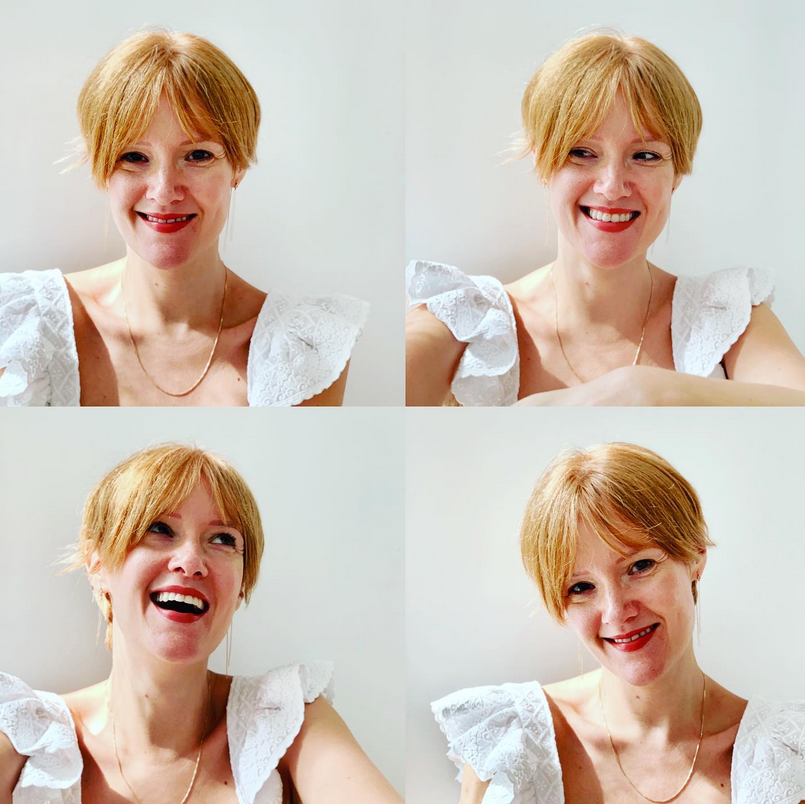
My name is Natalie, I’m 43 years old and I’m from Brussels, Belgium. I’m a maker, from the morning until the evening and I teach workshops. I’m very passionate about making things, all sorts of crafts in general but I’m most passionate about sewing and any sort of fiber art going from weaving, punch needling and macrame to embroidery.
My mum taught me the basics of sewing when I was about 18 years old. I then had a break for several years. I suppose I got a bit distracted moving to Dubai and settling into my new life. Around 2005 I bought myself a sewing machine here in Dubai and never stopped sewing…
Apart from the skills of a craft I truly believe sewing, just like any craft teaches you the value and time that goes into making things. In a world where, let’s face it, the majority of people still buy fast fashion it’s important to know that no matter how cheap your dress was someone has still taken hours to make it for you. Also, pricing of items make a lot more sense when you realize people work hard to deliver you a certain product.
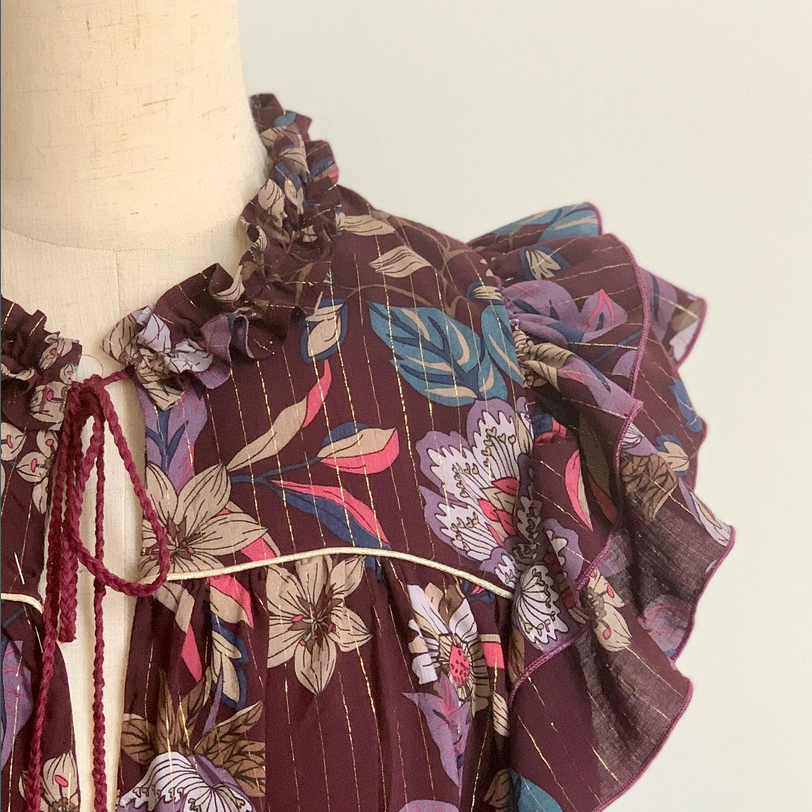

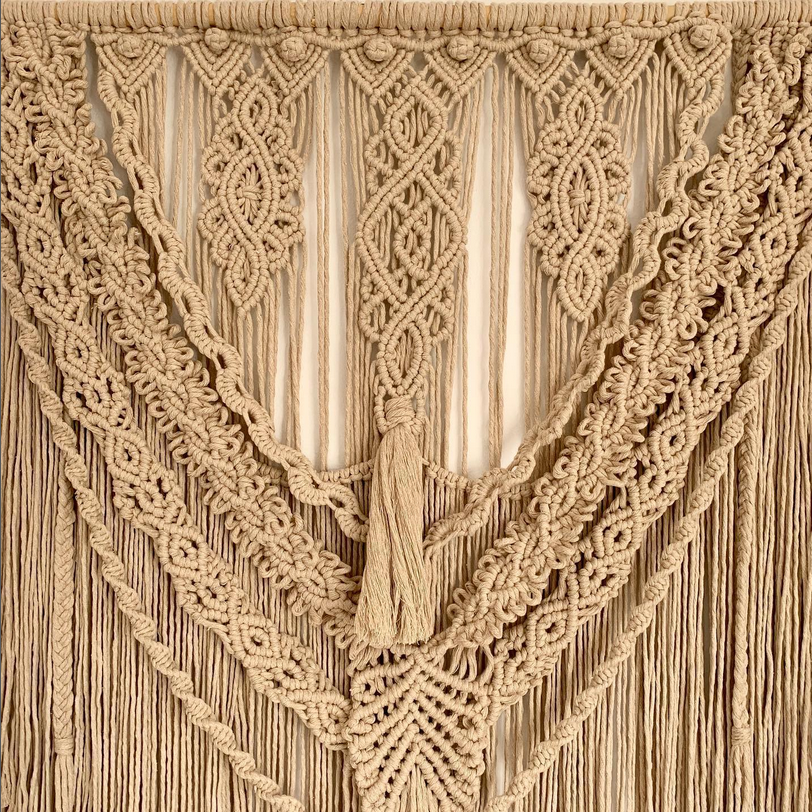
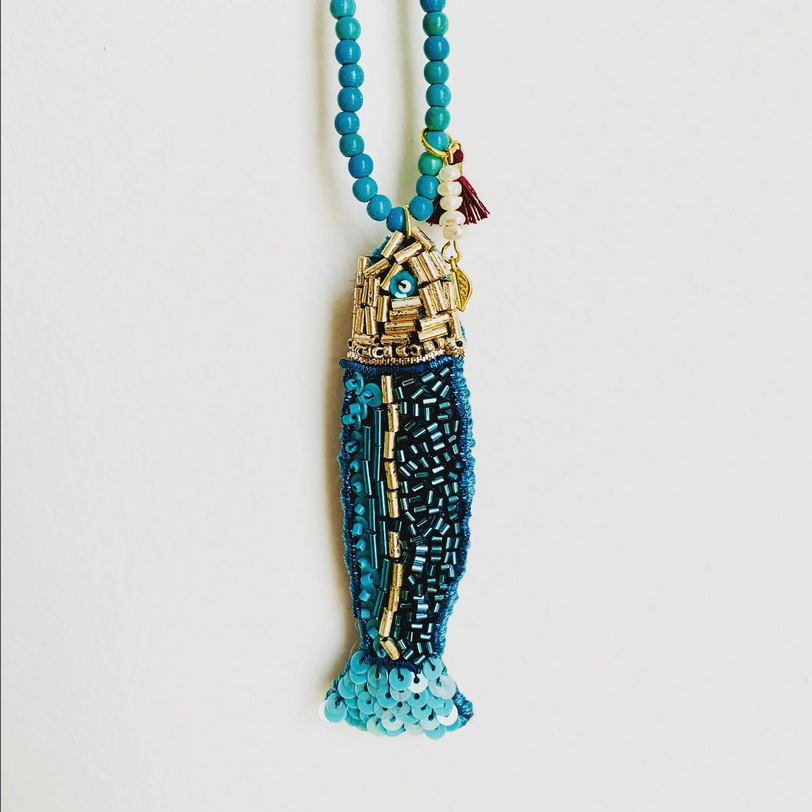
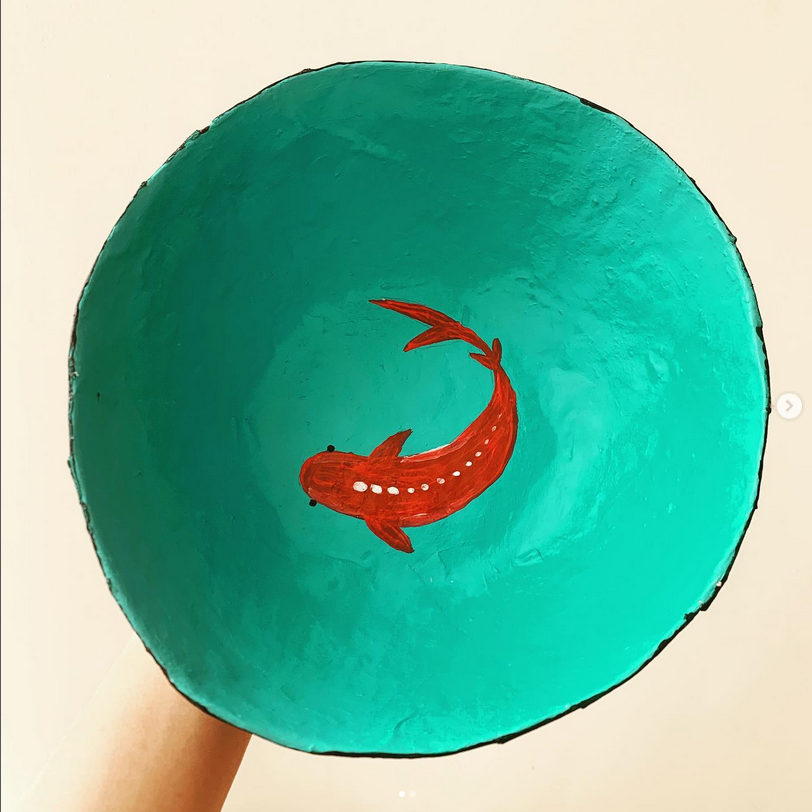
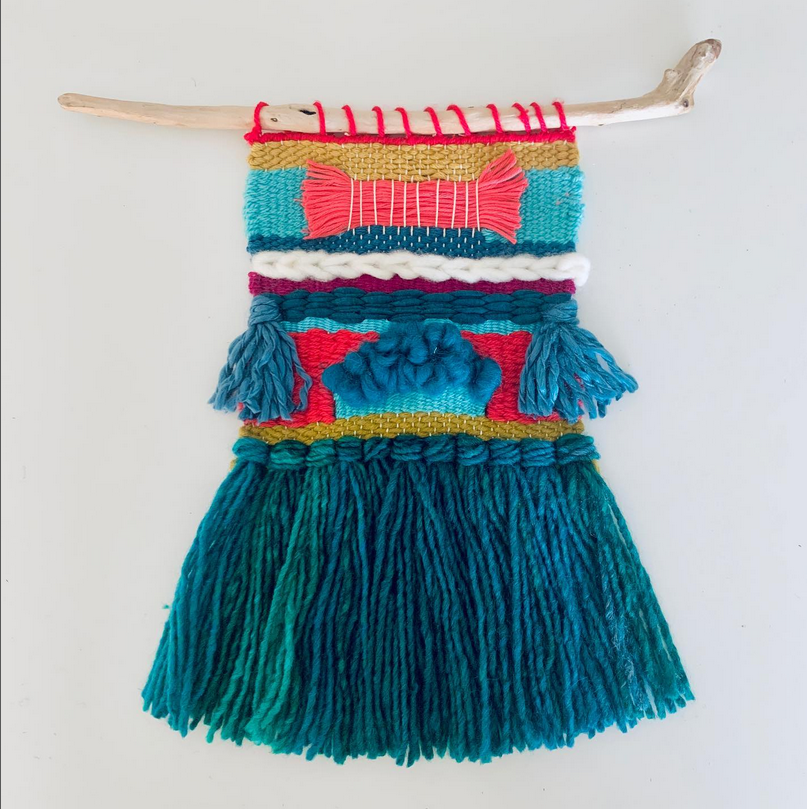
Yes, as I mentioned before crafts play a very important part in my life. I eat, breath and sleep crafts… When I’m not making anything I’m planning a new project. It’s a never ending list… I currently teach workshops macrame and weaving at Tribe in Al Quoz but there will soon be some exciting news 😉
I find my creativity anywhere… Needless to say social media play a large part in it and I feel very lucky to live in a day and age where people can share their skills and ideas with each other freely. It’s a never ending source of inspiration. But I also get inspired by life around me. I’m lucky enough to have been able to travel extensively and get inspired by different cultures, which are always a great inspiration.
Looking for quality fabrics: visit our store
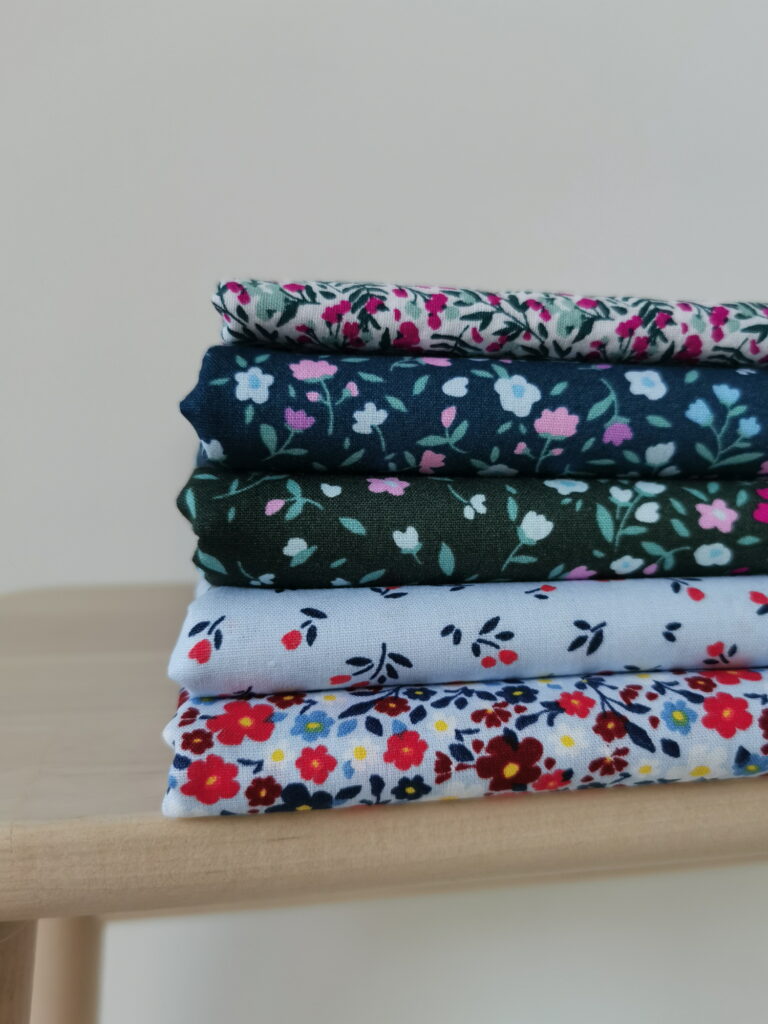
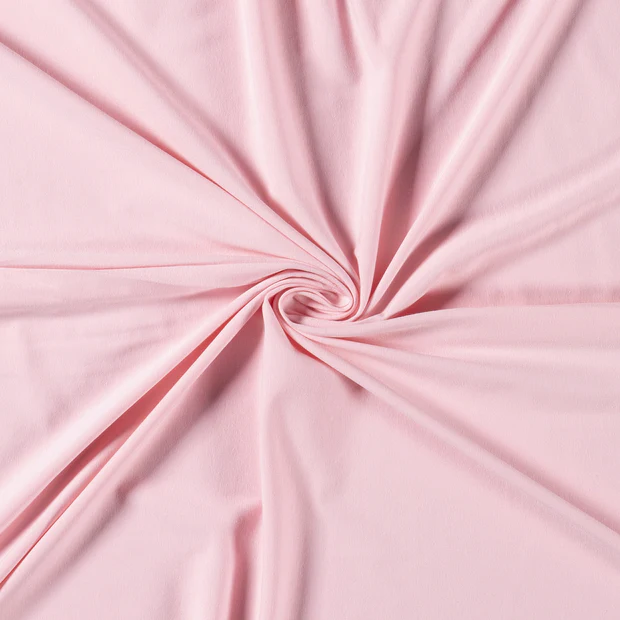
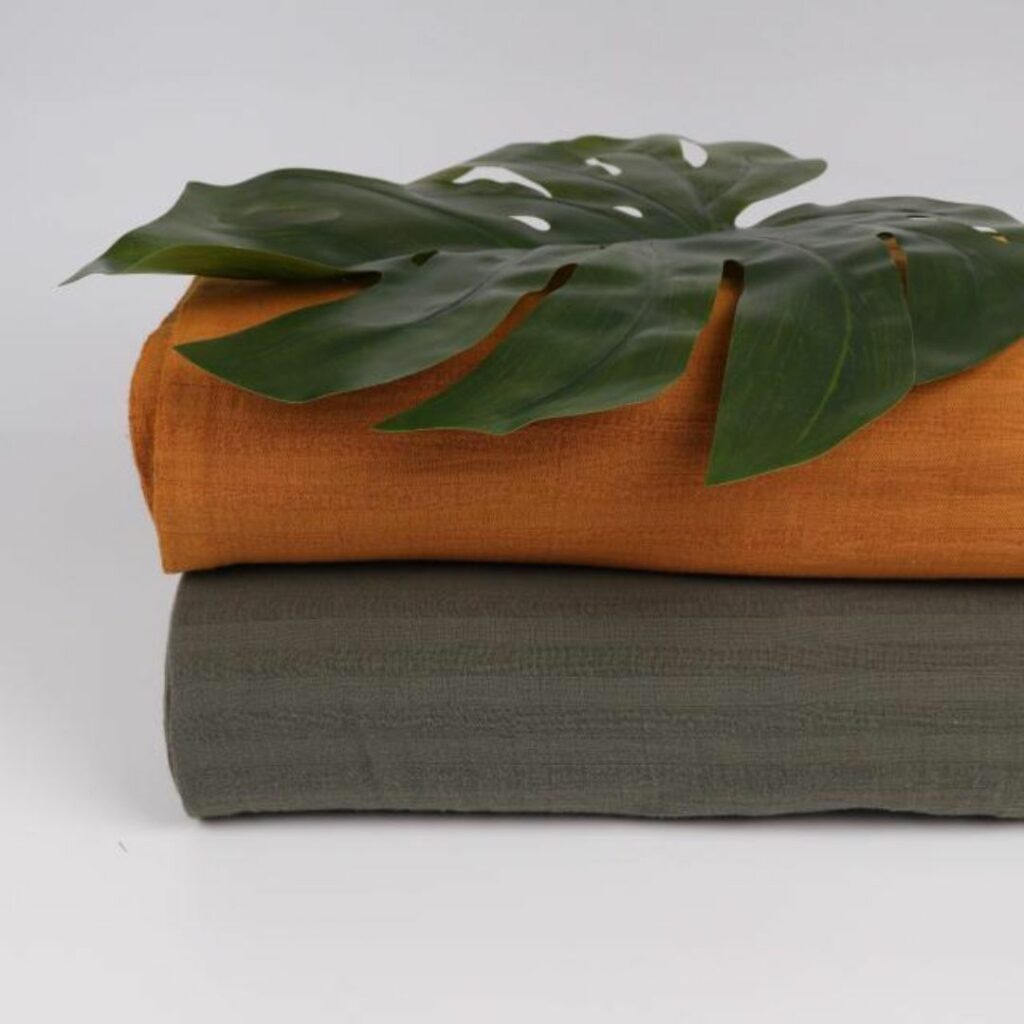
I don’t usually plan my sewing. Having sewn so much in the last 20 years I usually never sew out of necessity. I do have a soft spot for high fashion and I have a great appreciation for the detail and skill that goes into creating those garments. I can get really mesmerized by the work that goes into making haute couture. I therefore quite often go and wander in high fashion department stores so I can actually see how some items of clothing are made. Nothing more rewarding than making your own mini collection for a fraction of the price!
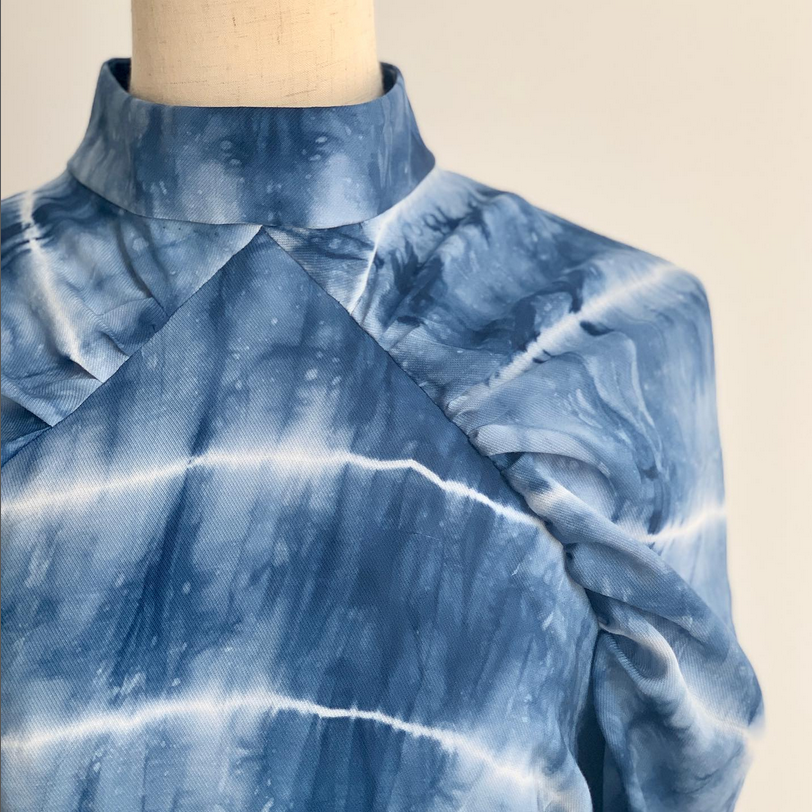
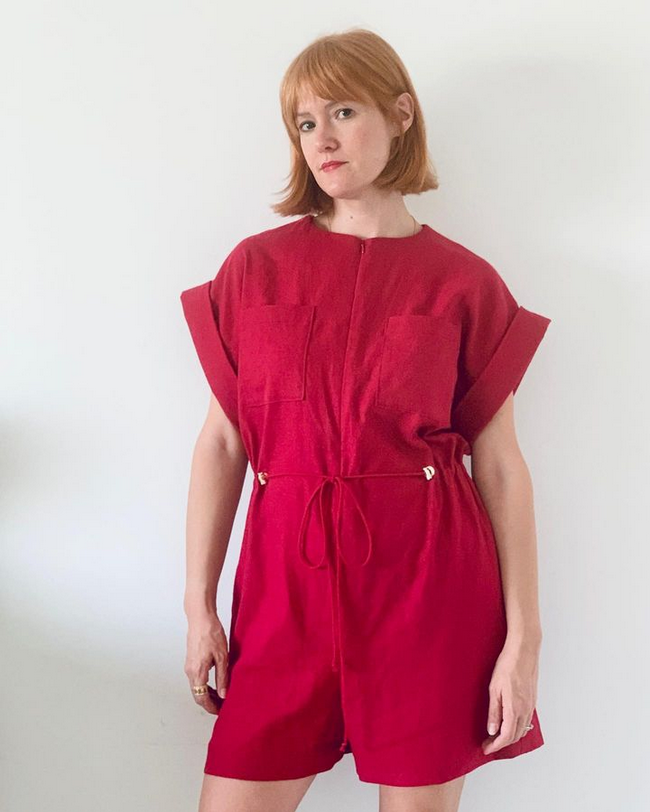
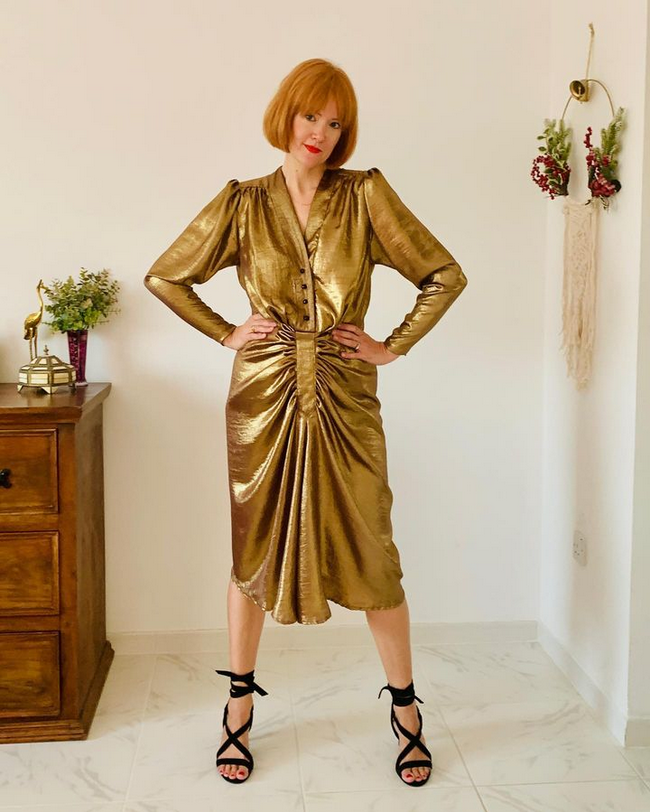
I don’t have any favorite fabrics simply because it depends on the garment I’m making. I try to go as much as possible for sustainable fabrics and try to avoid polyester. But then again, there are not that many available in Dubai and having them sent from overseas is definitely not the answer. I’m also very lucky to come from a family of sewers. My mum had a huge collection of high end deadstock fabrics she used to buy outlet sales. Since she doesn’t sew anymore I get to bring many of them to Dubai…
Being in Dubai you can never go wrong with a nice summer dress…
Attention to detail. This counts for any craft I believe if you don’t want your piece to look “homemade”. No matter how long you have been sewing, your seam ripper is and will always be your best friend! Even if you have to start over 10 times, it’s worth it and I’m not happy unless it is 100% as it should be. I can’t tell you how many projects I’ve had to chuck in the bin because they were seam ripped beyond repair…
| Favorite fabric: viscose | Favorite color: off white |
| Favorite print: no print | Favorite designer: – |
My instagram page is @the_heirloom_factory
You can follow Natalie’s creative journey on her Instagram account @the_heirloom_factory You can also take part to her different workshops. To have more information, you can contact her directly on Instagram.
Few weeks ago, we introduced you Julia, a talented freestyle-seamstress who run a successful blog called Contour Affair as well as an Instagram Page with more than 13K followers. In this second part, Julia shares with us her secrets and advice to start sewing and where she finds her creativity.
To know more about Julia and her journey about slow fashion and upcycling, read the first part of the interview here
What is your favorite item to sew and wear in Dubai?
Shorts set, 100%. I sew a lot of matching 2-piece sets. At some point, I have even considered if it was not too many but the reality is that this is what I am comfortable wearing most of the time. For me practicality is everything. I love long flowy dresses but my toddler sees them as something to hang onto and climb up. So right now, shorts sets are perfect for where I am in life.The bonus is that they can be combined in countless ways. I sew what works for me rather than following trends.

Where do you find your creativity?
Literally everywhere. I can get inspiration from the most random thing. I once had an idea for a dress from the shape of a glass. I used to follow runway shows of my favorite designers and get ideas and inspiration from their collections. But over the past few years, I have gotten slightly turned off by this, because I feel that even in high fashion the volume of collections is just excessive, and impossible to keep up with.
Another source of inspiration for me is street style. There are a couple of cool street style blogs that I sometimes scroll through. But mostly, I just observe what is around me. I really enjoy looking through vintage photography and of course browsing vintage stores. It is such a joy to feel the fabrics, see the finishes, the time and care taken in hand-stitching and perfecting details. It’s fascinating.
Looking for quality fabrics: visit our store


I have a hyperactive and very visual brain, so everything around inspires me in some way. It is really hard for me to quite down my thoughts and this is why sewing is such a powerful type of meditation for me; it centers me and makes me be present in the moment.
What is/are your favorite fabric(s)? What are your criteria when choosing it?
I could not pick a favorite fabric because it depends so much on what I am creating. I generally go for natural fibers such as linen, organic or certified cotton (where I can source it). I love silk, even though its production can be questionable. But I love the feel of it. Linen is another favorite, but it only suits certain pieces as it wrinkles easily – the undone look needs to work for the garment.
The question to me is more about what makes the fabric special. How is it unique? How does it make me feel? Is it something I like right now, or will I also enjoy it for the years to come? I believe what you dress in really sets the tone of your day. In my early 20’s, I used to wear primarily neutral colors, but over time I have gravitated towards bold prints, primary & bright color combos, and much louder designs. Living in Dubai has definitely influenced this, as the fabric styles here tend to be less minimal, more alive.

My taste also has changed though the journey of becoming a mother. During my pregnancy, I noticed that I was sewing a lot of mint/sage green pieces, and I wondered why. I realized it is associated with tranquility and balance. I was probably looking to bring calmness into my life while I was going through a huge change.
Post-pregnancy, I have struggled with finding myself again as a mother and as my own individual self. I am really gravitating towards fun patterns and bright colors now. I find these help lift my mood when things feel heavy.
More than the fabric composition, for me the big priority is choosing secondhand materials. Here, my usual rules of natural fibers don not really apply as much. I can work with poly-blends or other synthetic materials if the alternative is that they might end up in landfill. Whatever fabric I am working with, the waste I produce is minimal. I cut creatively to optimize my fabric use, and every tiniest scrap eventually goes to create fillers for pillows for example.
Any sewing secret you’d like to share?
Do not ever look at the needle because otherwise you will not sew straight. Always focus on the presser foot and keeping it aligned. This simple shift has an immediate and huge impact on the finish of your sewing.
What advice would you give to someone who wants to start sewing?
Go to my blog! Practically speaking, I would say do not buy fancy tools. You can start and go far with very basic tools. A simple machine is enough for most projects, overlockers for example are great but not a necessity.
You can start by altering your existing clothes, then progressing to sew simple things like circles skirt or boxy top for example. There are also many tutorials online you can learn from. Accept that sewing is a hobby with a steep initial learning curve. You will make mistakes, but these are all such valuable learning moments. Enjoy the ride. I like to share my failures with the online sewing community because I find them hilarious.



Last but not least, to do it for the right reasons. During Covid lockdowns, many people started sewing and shared their creations on social media. I love to see this community growing. However, because this is a hobby that will take a lot of time, resources and money, it is important to think about why we sew. It can be intoxicating to realize you can recreate garments at will but my wish for every new seamstress is to keep mindfulness at the center of it. To sew and create for ourselves, not for others or for social media.
After having my baby, like all new moms, I went through a phase where I felt I could not get anything done. Definitely not sewing like I used to. Social media was making me compare myself to others, and I got huge anxiety from seeing how “everyone else” was doing a million things in a day. Today, whenever I feel this way, I try to remind myself of why I sew. It is for me and no one else. Sewing is a place where I go to calm down, feel grounded, and live in the present. And that is enough.
You can follow Julia’s sewing journey on her Instagram account @contour_affair and don’t hesitate to have a look at her blog, you will find a lot of tips and tutorials: www.contour_affair.com!
Julia also has also created a label called MENAI. She designs unique, comfortable and everyday luxury pieces, which will be then customized based on your measurements and sewn by her in Dubai.